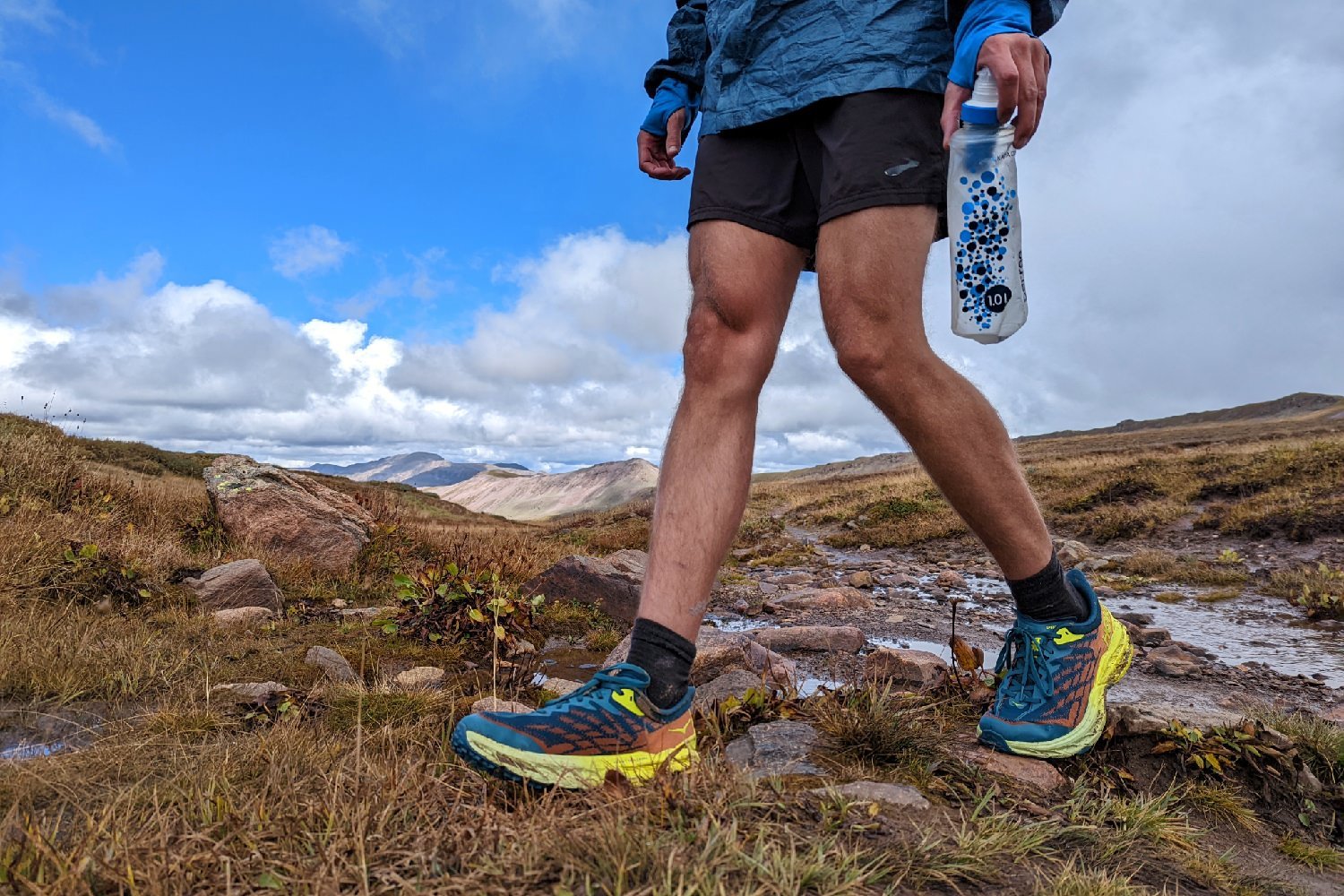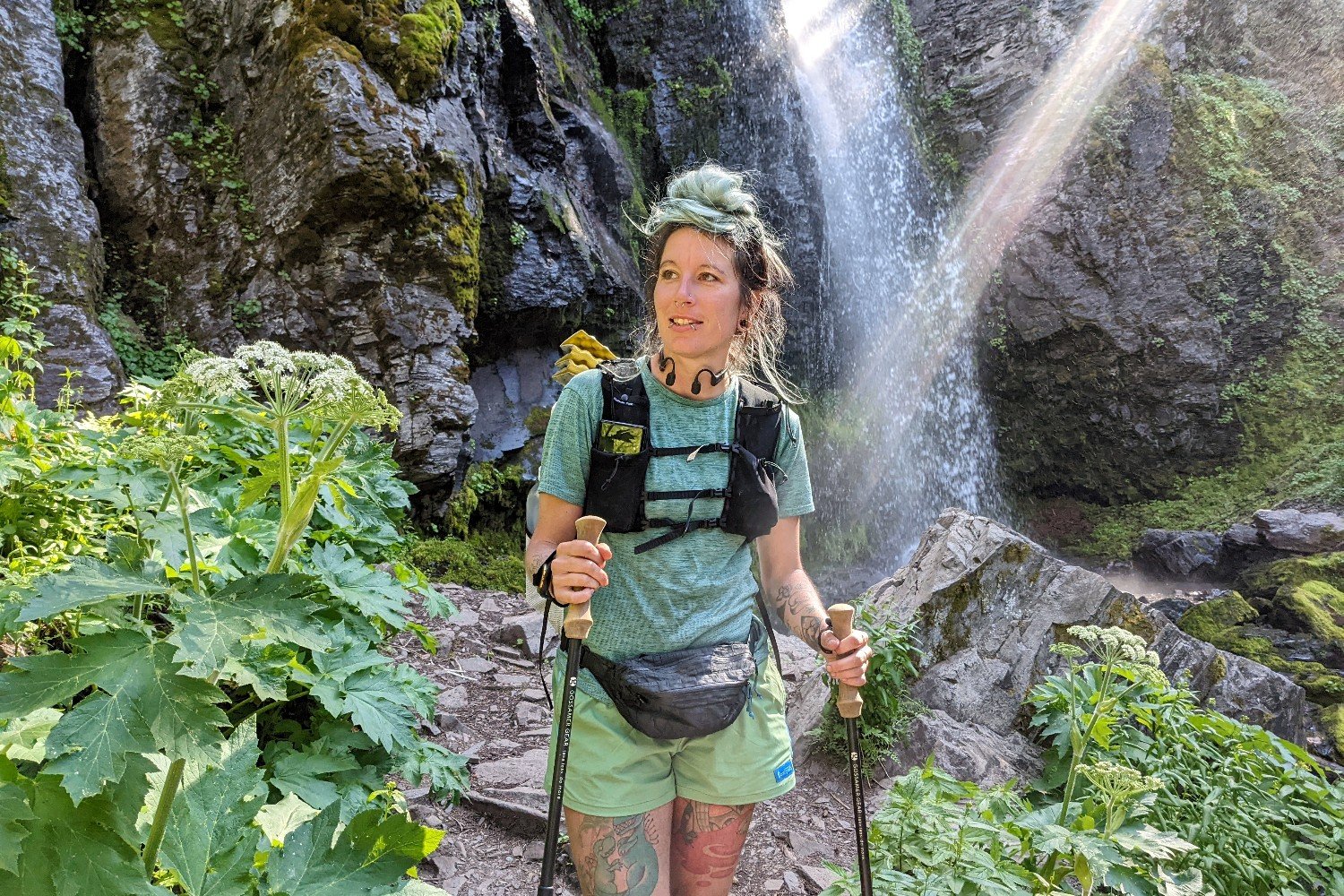PHOTO CREDIT: CASEY HANDLEY (CLEVERHIKER.COM)
The Strawberry Mountain Wilderness Loop is one of our favorite hikes we’ve ever done in Oregon. Out in this Eastern Oregon paradise, you’ll encounter crystal clear lakes, vibrant fields of wildflowers, ample opportunities to view wildlife, and sweeping views of the Blue Mountain Range.
The Strawberries are a little off the beaten path, but this trip is well-worth the drive if you’ve got a long weekend.
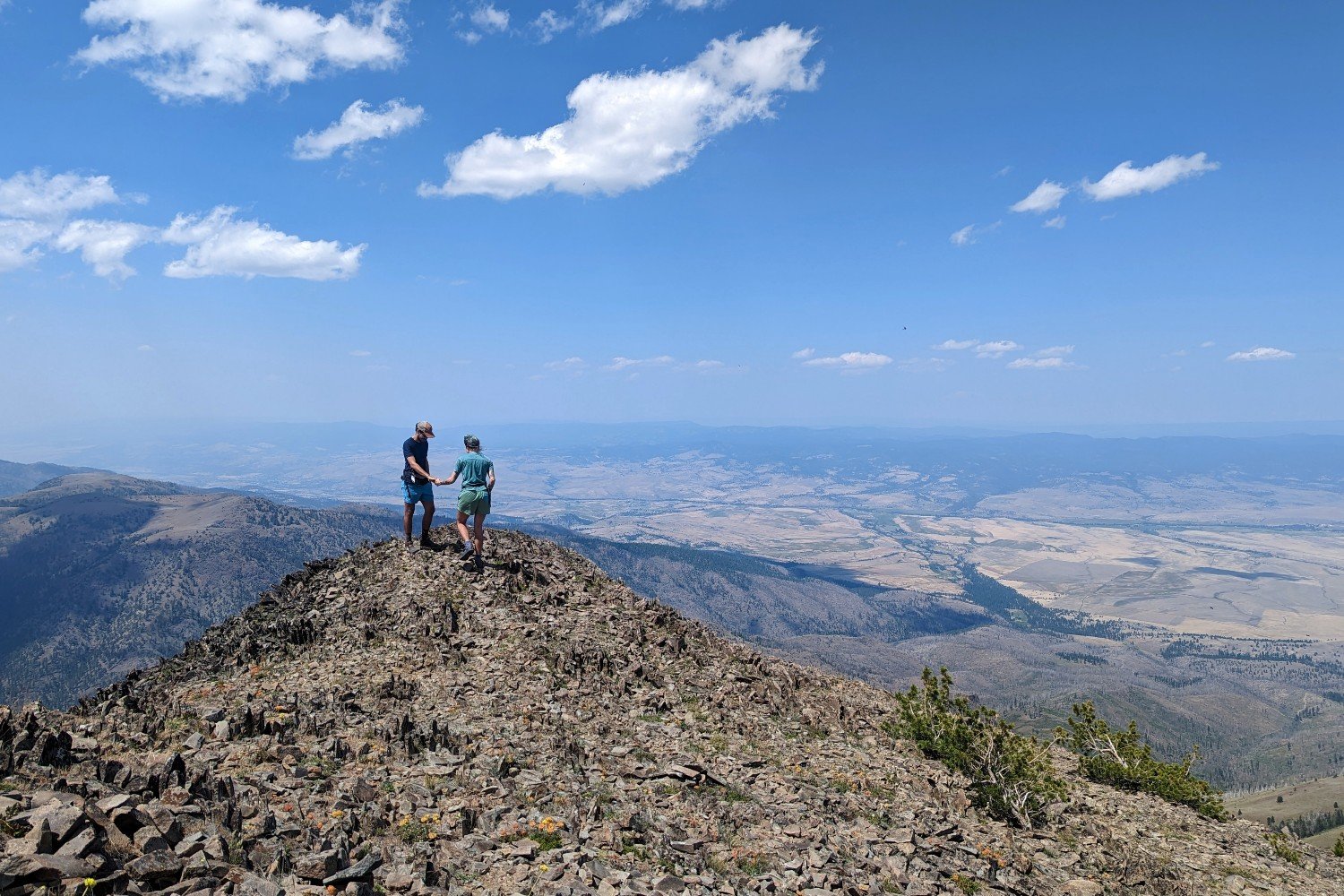
PHOTO CREDIT: CASEY HANDLEY (CLEVERHIKER.COM)
Quick Facts
-
Distance: About 20 miles (varies depending on which side trails you take)
-
Days needed: 2-3 days to really experience all this area has to offer
-
Type: Loop
-
Elevation gain: About 5200 ft. including the side trail to summit Strawberry Mountain
-
Best travel time: Summer- early fall (July-October depending on weather)
-
Permits: You’ll need a Northwest Forest Pass or Interagency (America the Beautiful) Pass to park at trailheads in the Malheur National Forest
-
Difficulty: Challenging
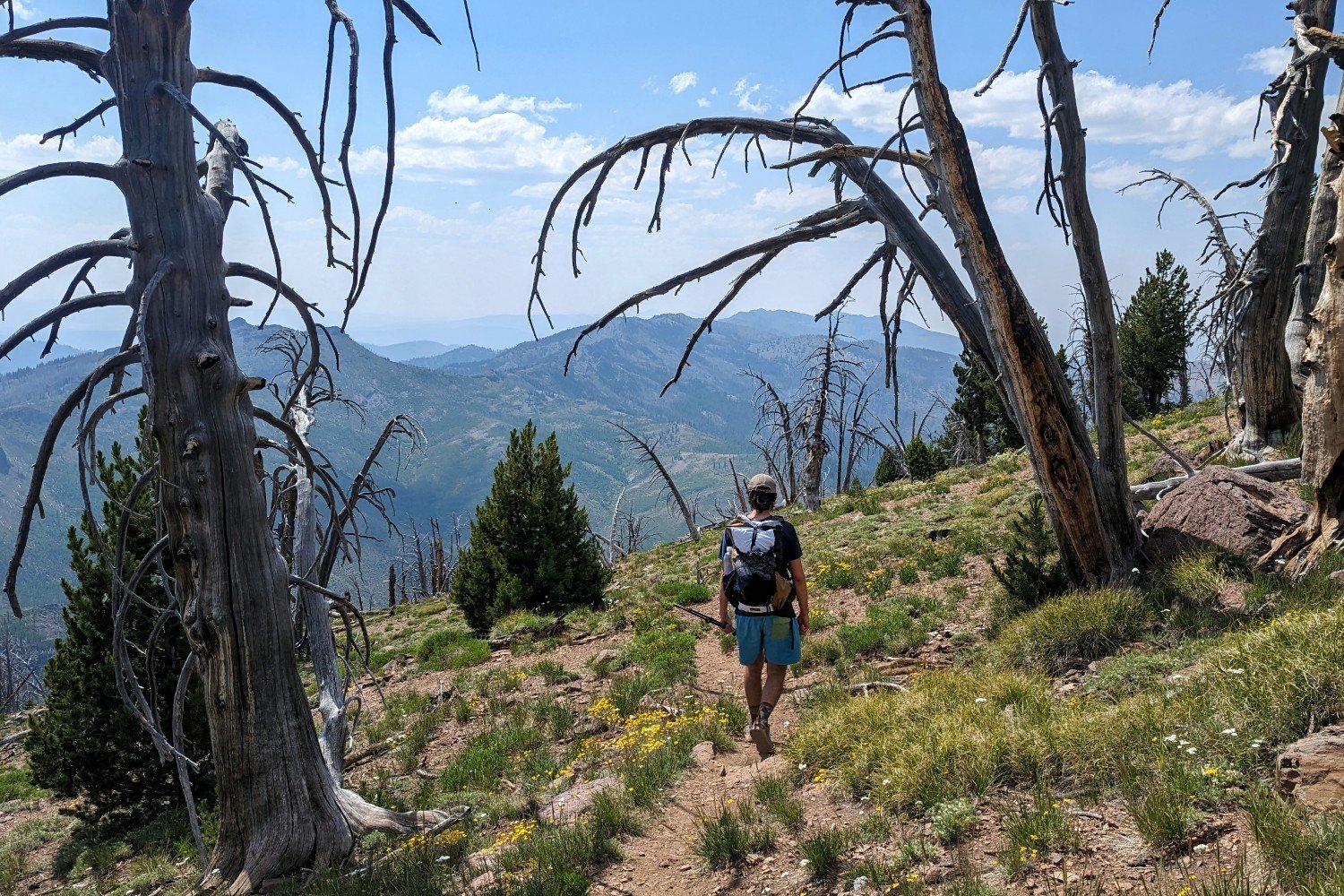
PHOTO CREDIT: CASEY HANDLEY (CLEVERHIKER.COM)
Highlights
-
High elevation lakes with tons of fish
-
Sweeping views of the Blue Mountains
-
Abundant wildlife (mountain goats, deer, birds, butterflies, etc.)
-
Tons of wildflowers (usually July-August)
-
Waterfalls
-
Relative solitude
-
Summiting the highest mountain in the Malheur National Forest
-
Well-maintained trail
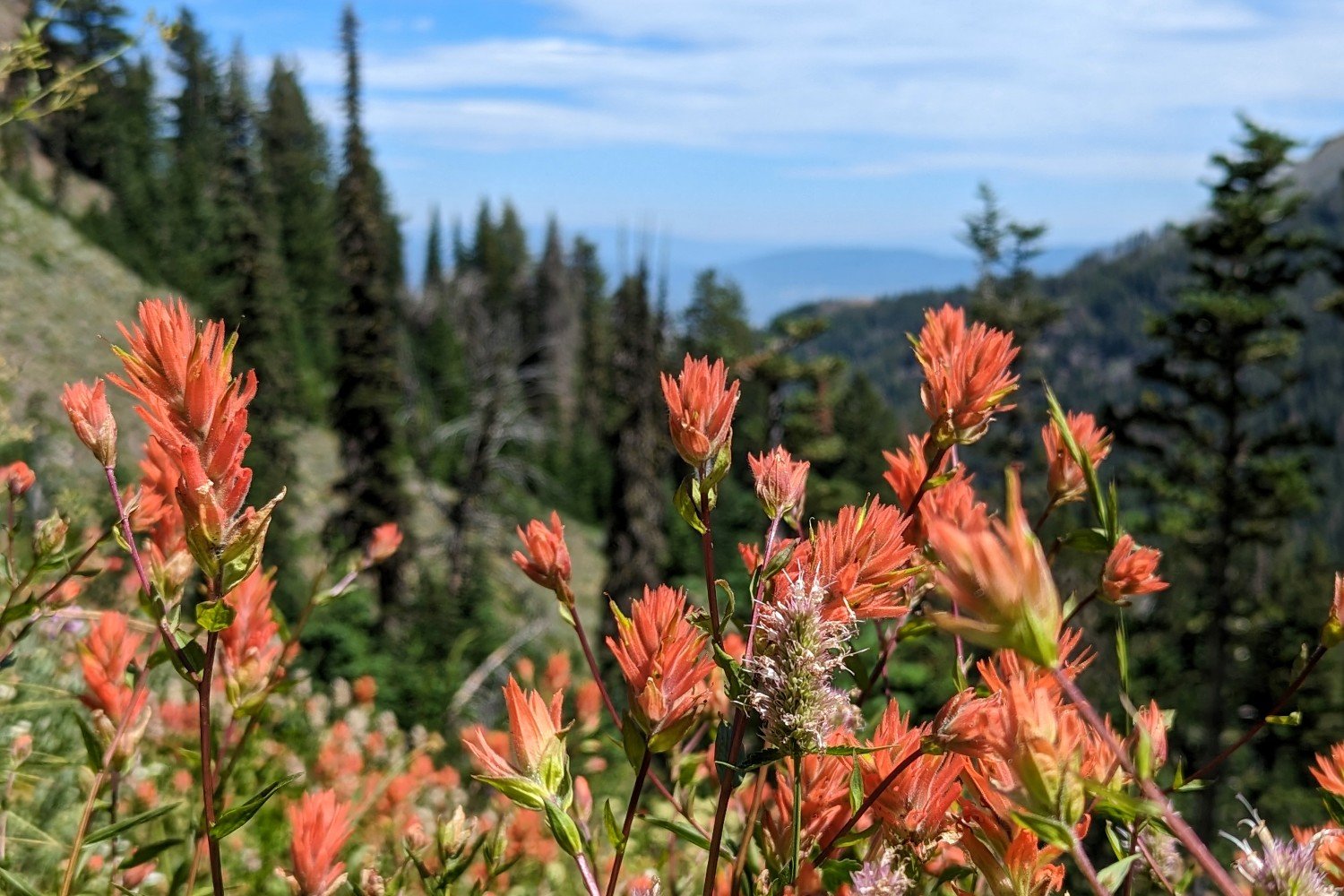
PHOTO CREDIT: CASEY HANDLEY (CLEVERHIKER.COM)
Lowlights
-
Lots of sun exposure
-
Some fall risk on narrow trail through scree fields
-
Mosquitoes in the spring/summer – especially near the lakes
-
Road to the trailhead is a bit sketchy
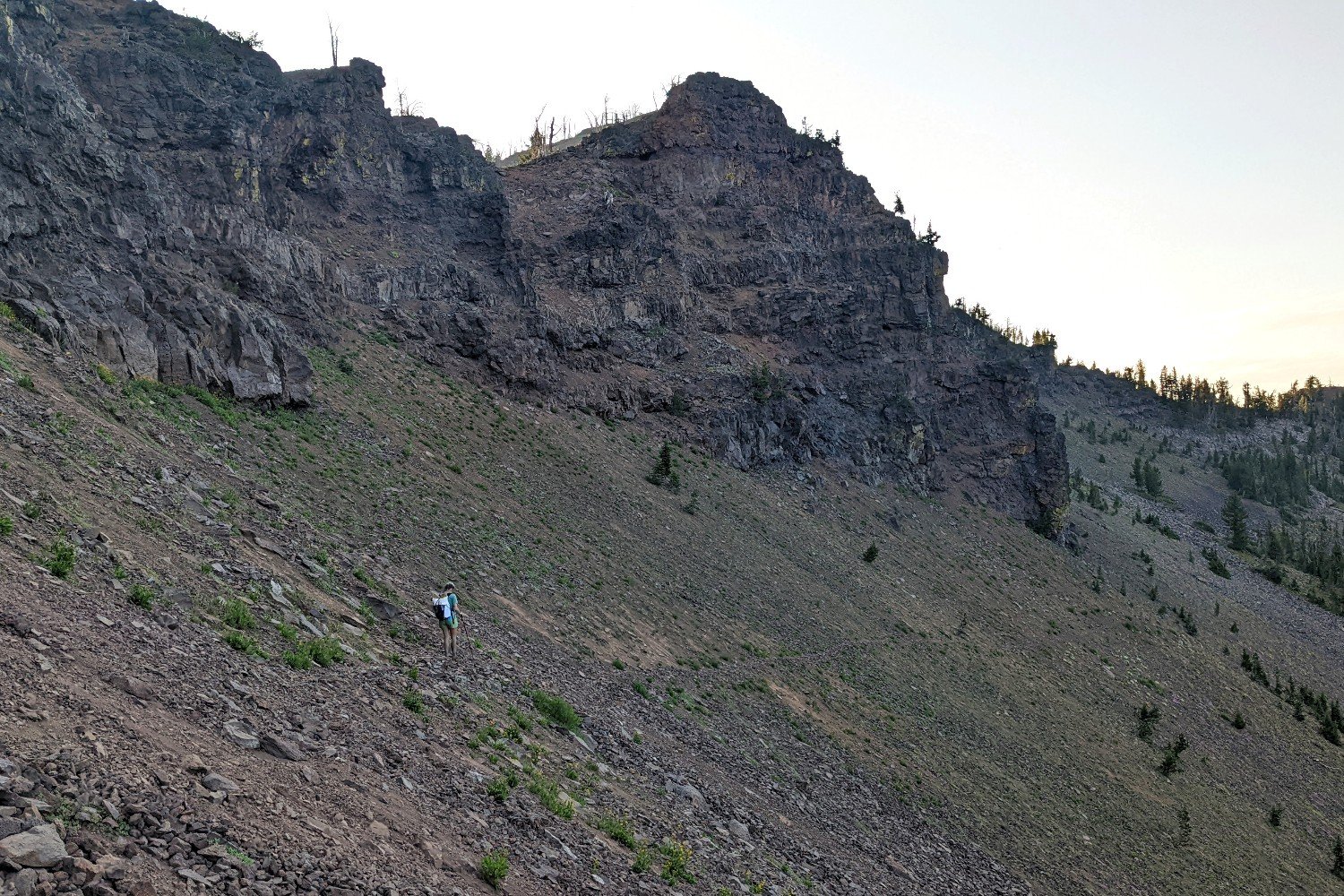
PHOTO CREDIT: CASEY HANDLEY (CLEVERHIKER.COM)
Best Time to Travel
The best time to visit the Strawberry Mountain Wilderness is in the summer, but you may be able to access the area in early fall depending on snow.
We hiked the trail in late July, which we thought was perfect timing. We didn’t have many mosquitoes (except in the evenings near lakes), there were plenty of wildflowers, and the temps weren’t too hot during the day nor too cold at night.
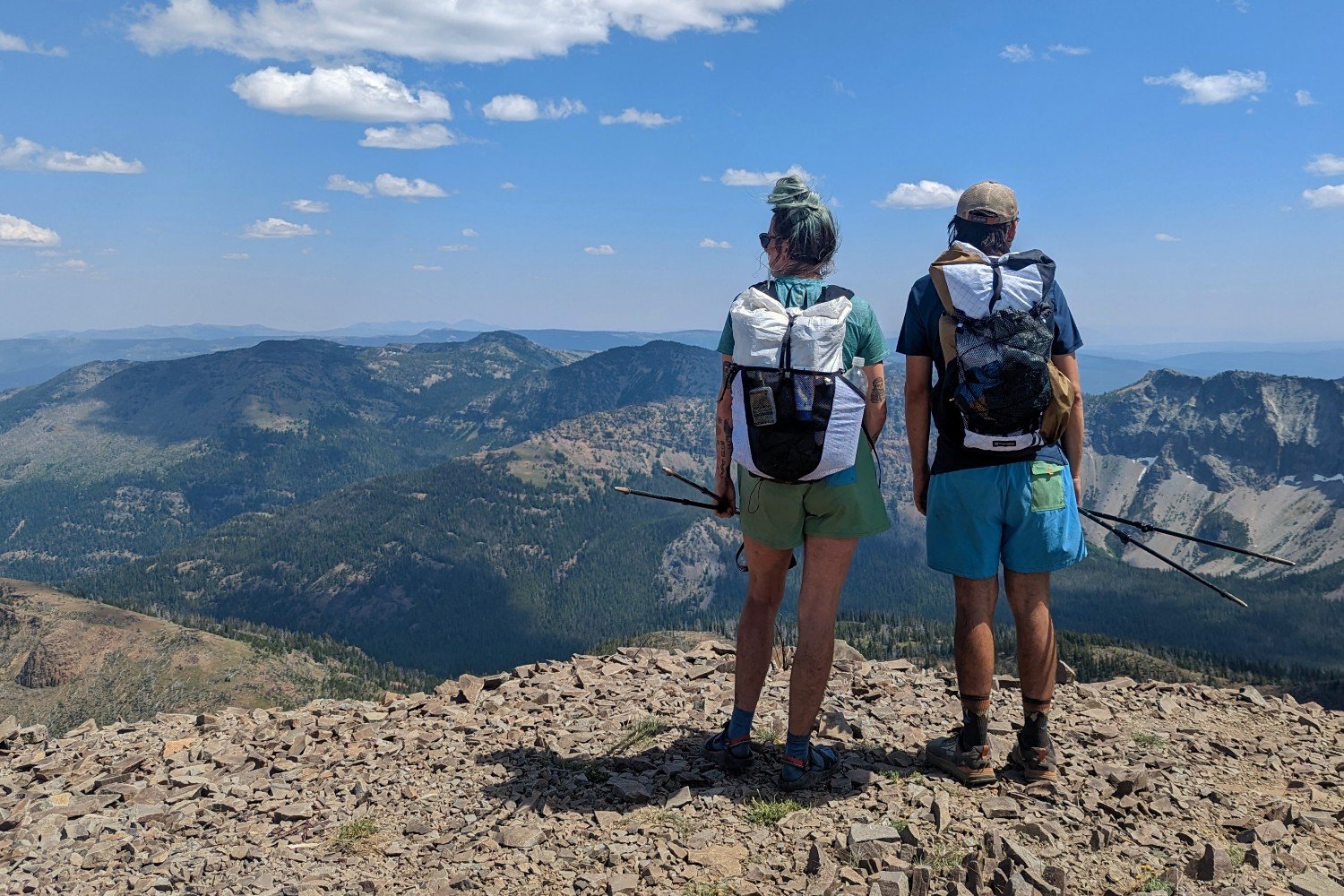
PHOTO CREDIT: CASEY HANDLEY (CLEVERHIKER.COM)
Difficulty
Difficulty depends on your experience, physical fitness, pack weight, & weather conditions.
We would categorize this hike as challenging due to the considerable amount of elevation gain, sections of narrow trail through steep/loose scree slopes, and some difficulty navigating.
We fully believe that the heavier your backpack is, the harder your hike will be. We have our full list of gear recommendations and tips at the end of this guide.
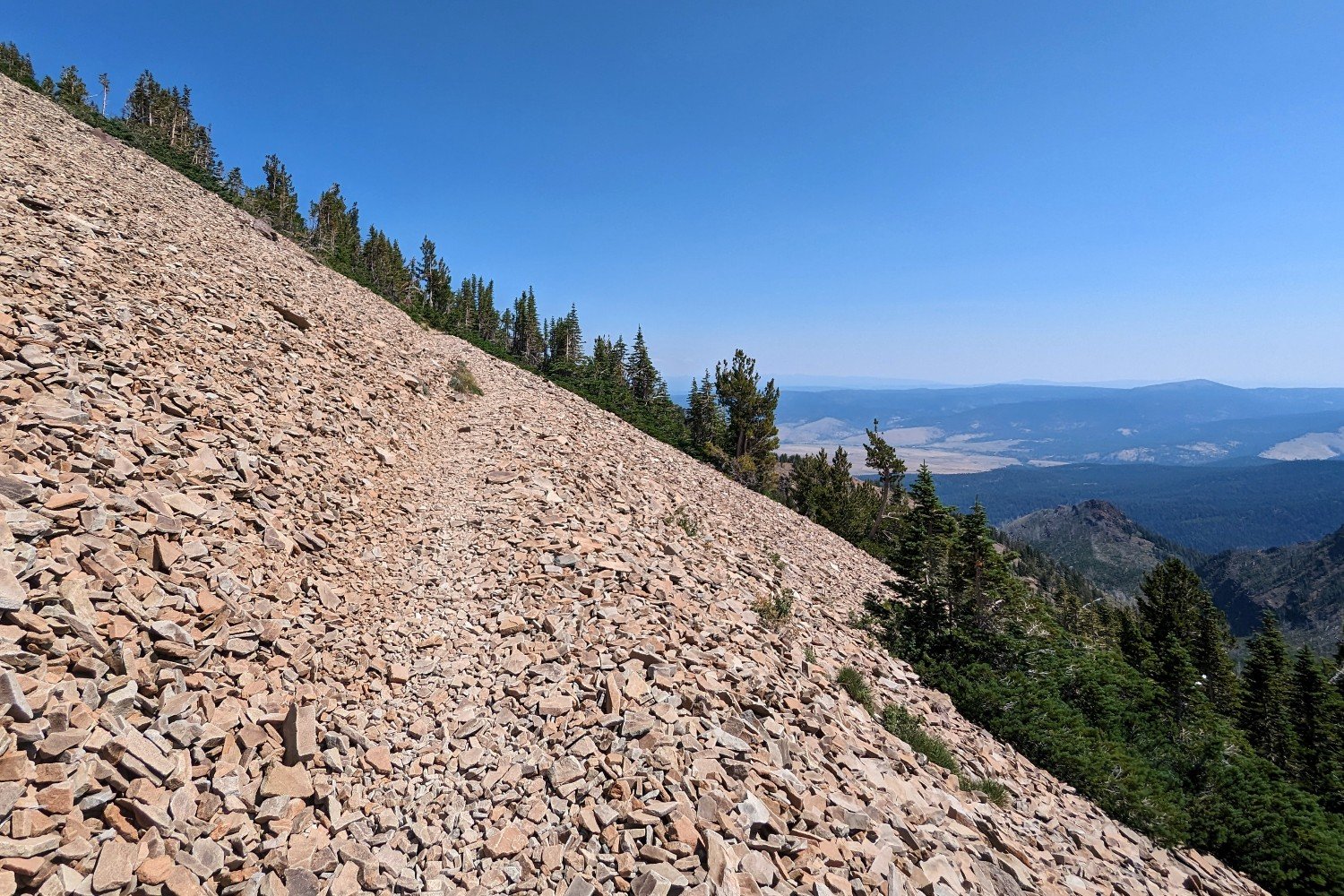
PHOTO CREDIT: CASEY HANDLEY (CLEVERHIKER.COM)
Permits
No permits are needed to hike the Strawberry Mountains Wilderness Loop, but make sure you have a Northwest Forest Pass or an America the Beautiful pass to park at the trailhead
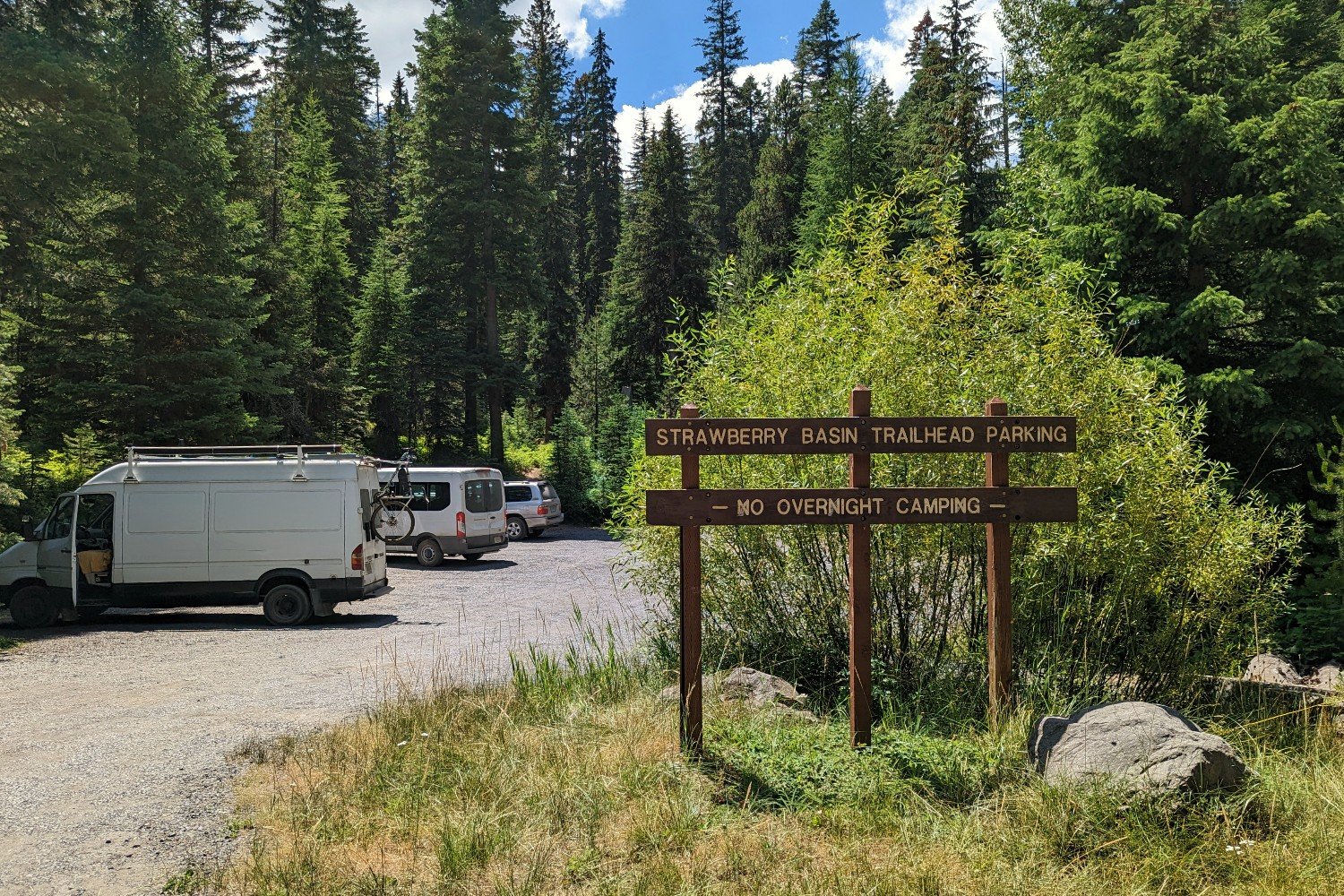
PHOTO CREDIT: CASEY HANDLEY (CLEVERHIKER.COM)
Getting There
The Strawberry Mountain Wilderness Loop is a bit off the beaten path, and is a fairly long drive from any major population center. The drive is beautiful, though, and will take you through the John Day Fossil Beds National Monument if you’re coming from the west.
These directions are for getting to the Strawberry Basin Trailhead, but you could also start from the Roads End Trailhead or High Lake Trailhead (both are on FR-1640, but Google doesn’t recognize them – navigating to High Lake, Oregon will get you to either trailhead). The road up to Strawberry Basin was rutted, narrow, and steep in sections, but we were able to make it up and down (very slowly) in our older 2WD dually Sprinter Van. There were also several small sedans up there, so most vehicles would be okay going up this road at a slow pace with careful maneuvering. We do not recommend pulling trailers past the Horse Camp on NF-6001.
-
From Portland – From Portland you’ll have just over five and a half very worthwhile hours to travel. There are a couple of different route options, and – while both are beautiful – we think the route that goes through Prineville is the most scenic and only adds about 15 minutes to the drive time. You’ll take Highway 26 all the way East to Prairie City, and then turn right on Bridge St. which becomes Strawberry Rd and then NF-6001. This road ends at the Strawberry Basin Trailhead.
-
From Bend – Coming from Central Oregon’s most populous city, you’ll travel for just over three and a half hours. Head northeast to go through Prineville, then stay on HWY 26 all the way to Prairie City. Turn right onto Bridge St., and follow it all the way to the end to get to the trailhead.
-
From Boise – Boise hikers will have less than three and a half hours to drive to get to the Strawberries. Take I-84 north to HWY 26 west. When you get to Prairie City, take a left on Bridge St., and follow that road to its southern end at the trailhead.
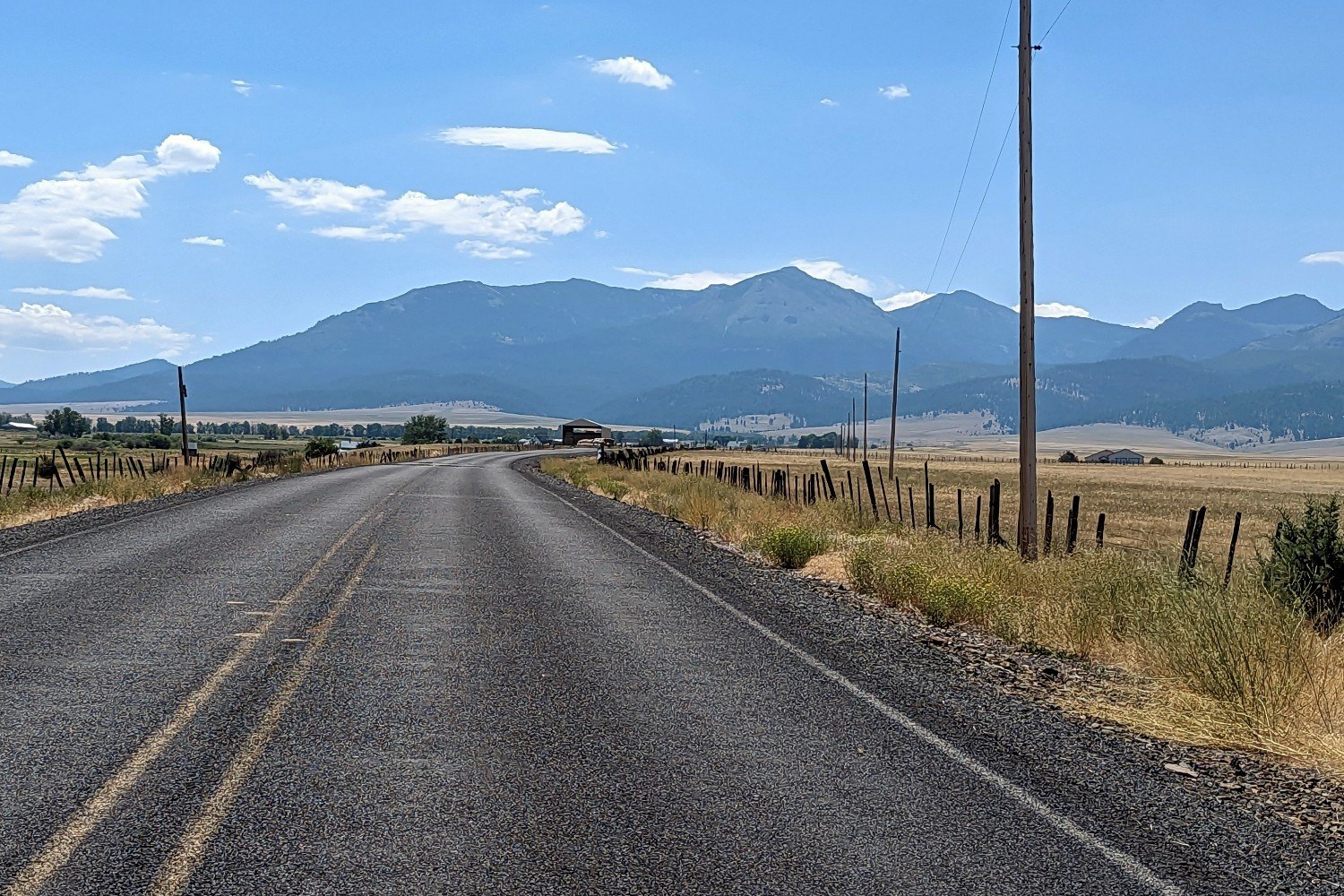
PHOTO CREDIT: CASEY HANDLEY (CLEVERHIKER.COM)
Maps & Guidebooks
We recommend downloading the Avenza phone app. and purchasing the Strawberry Mountain Wilderness Map (about $5) which covers this loop and the surrounding area. Using this app, you can see your real-time location on the map. This saved us a couple times in the less-traveled southeastern side of the loop.
If you have an iPhone, Topo Maps+ is another great navigation tool that will give you access to a ton of different maps and powerful route-tracking features.
Check out our guide on How to Use Your Phone as GPS Device to see how to get the most out of your smart device.
You can also print or buy maps through the following links:
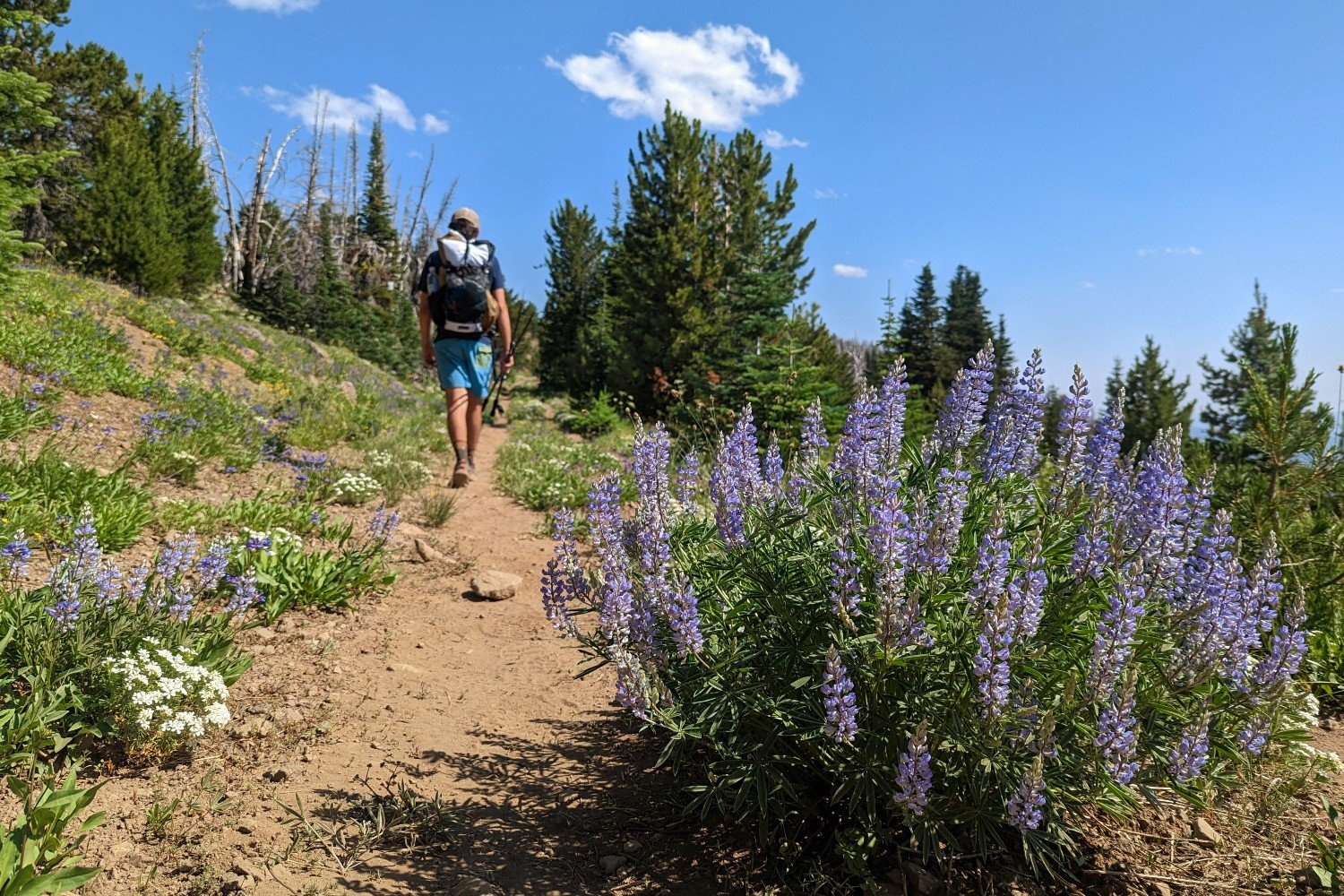
PHOTO CREDIT: CASEY HANDLEY (CLEVERHIKER.COM)
Regulations
It’s always important to practice Leave No Trace when you go into nature to protect yourself and others, wildlife, and the environment.
Before you head into the wilderness, you should check the Malheur National Forest – Strawberry Mountain Wilderness page to check the fire danger in the area. While many backcountry sites have fire rings at them, our strong recommendation would be to avoid building fires. If you do plan to have a campfire during low fire danger times, be sure you read through our Campfire Safety Tips Guide.
Dogs are allowed on this hike, but we recommend leaving your pup at home for this one. The trail is frequently narrow, covered in loose rock/scree, and often has steep drop-offs to one side. Wildlife is also abundant, so if you do plan to bring your dog – keep it on a leash to minimize risk to the forest inhabitants and your pooch. Get more advice on our 14 Tips for Hiking & Backpacking With a Dog page.
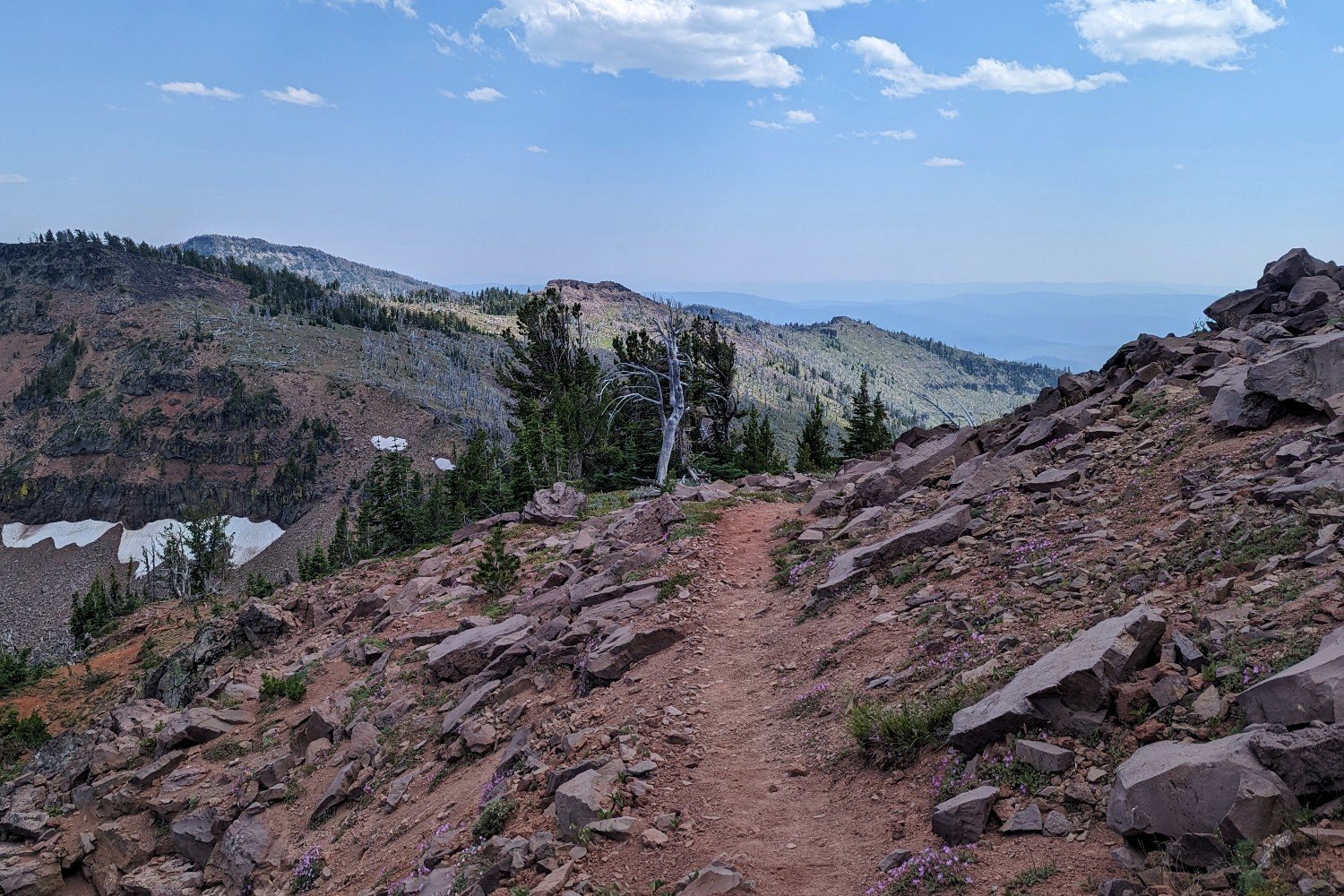
PHOTO CREDIT: CASEY HANDLEY (CLEVERHIKER.COM)
Water
Water is easy to access from springs and lakes for the first six miles of this trail (going counterclockwise from Strawberry Basin trailhead). The driest stretch is from about a half mile before the Strawberry Mountain summit trail to High Lake (about 7 miles including the summit). Be sure to stock up before you head up this sun-exposed section. We recommend carrying no less than two liters for this part of the hike.
After High Lake, you’ll trek a somewhat strenuous three miles before you have access to water again via a short side trail to Slide Lake. It’s a good idea to carry extra through this steep and exposed section, as well.
Slide Lake is your last major water source before you hike the last 3.5 miles back to the trailhead where you started. This stretch of trail is also pretty exposed and hot, and may be slower-going than your usual pace due to extremely narrow and loose scree traverses.
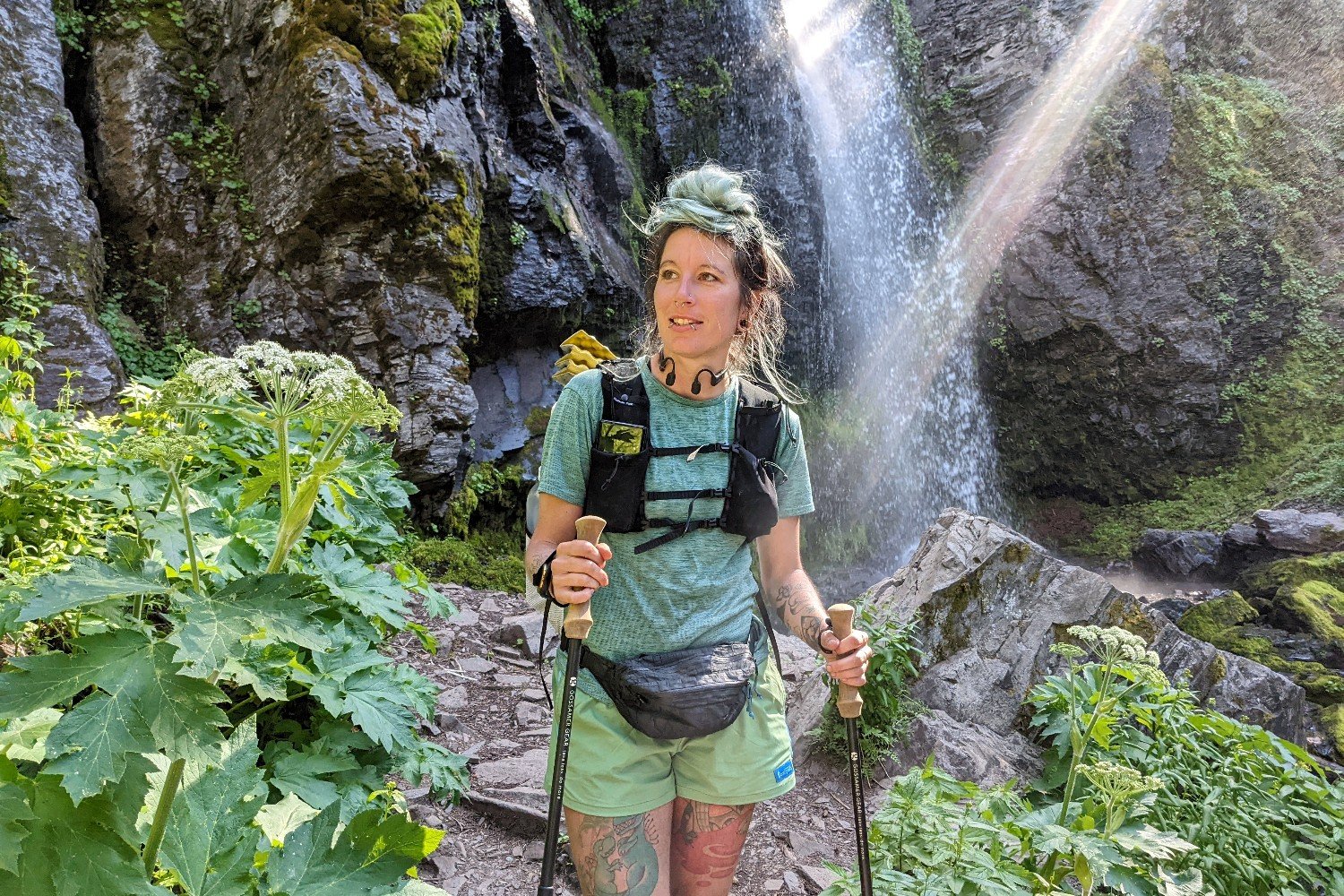
PHOTO CREDIT: CASEY HANDLEY (CLEVERHIKER.COM)
Route
There isn’t a ton of information available for this loop, so we put together this little description of directions to help you navigate:
From the Strawberry Basin Trailhead parking area, the trail starts behind the pit toilet and follows well maintained switchbacks up to Strawberry Lake. On the way up, you’ll encounter intersections with the Slide Lake Trail, keep right at these junctions to start the loop counterclockwise.
After you’re done taking in the sights at the lake, you can go either direction at the fork in the trail you came in on to get around the lake. Turning right to go along the west side of the lake is a .8 mile trek, going left to hug the east bank is .4 miles. There are a ton of campsites in the area. But this lake is only a mile from the trailhead, so you’ll likely encounter other campers, fishers, and SUPers/kayakers here – especially on the weekend.
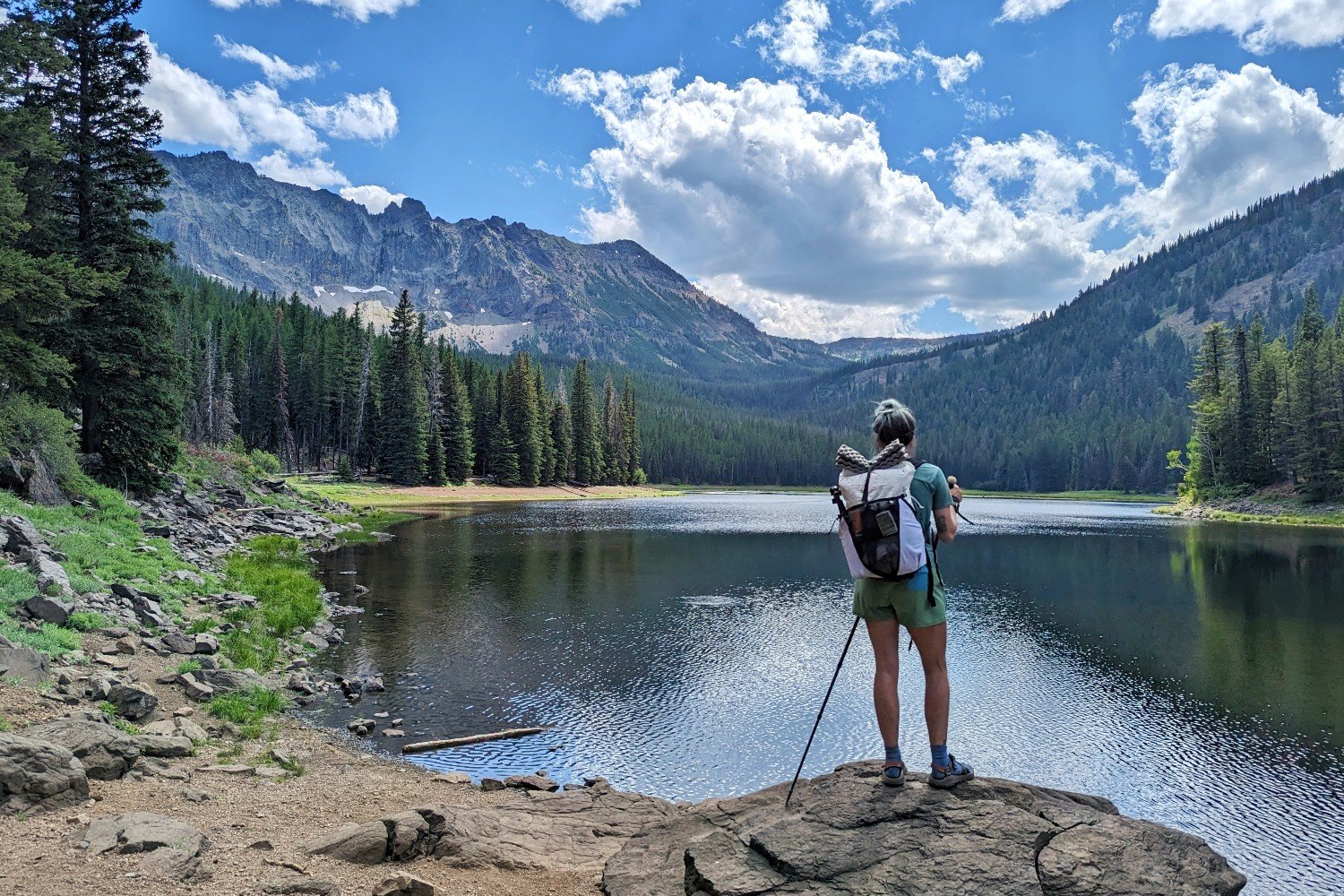
Strawberry Lake – PHOTO CREDIT: CASEY HANDLEY (CLEVERHIKER.COM)
If you took the west bank trail, turn right when you come to a junction on the south end of the lake to rejoin the Strawberry Basin Trail. If you went on the east side, continue forward at the junction on the southern end. Continue up the gentle slope to the stunning Strawberry Falls. This is a great spot to fill up on water and have a snack before continuing up into more sun-exposed trail.
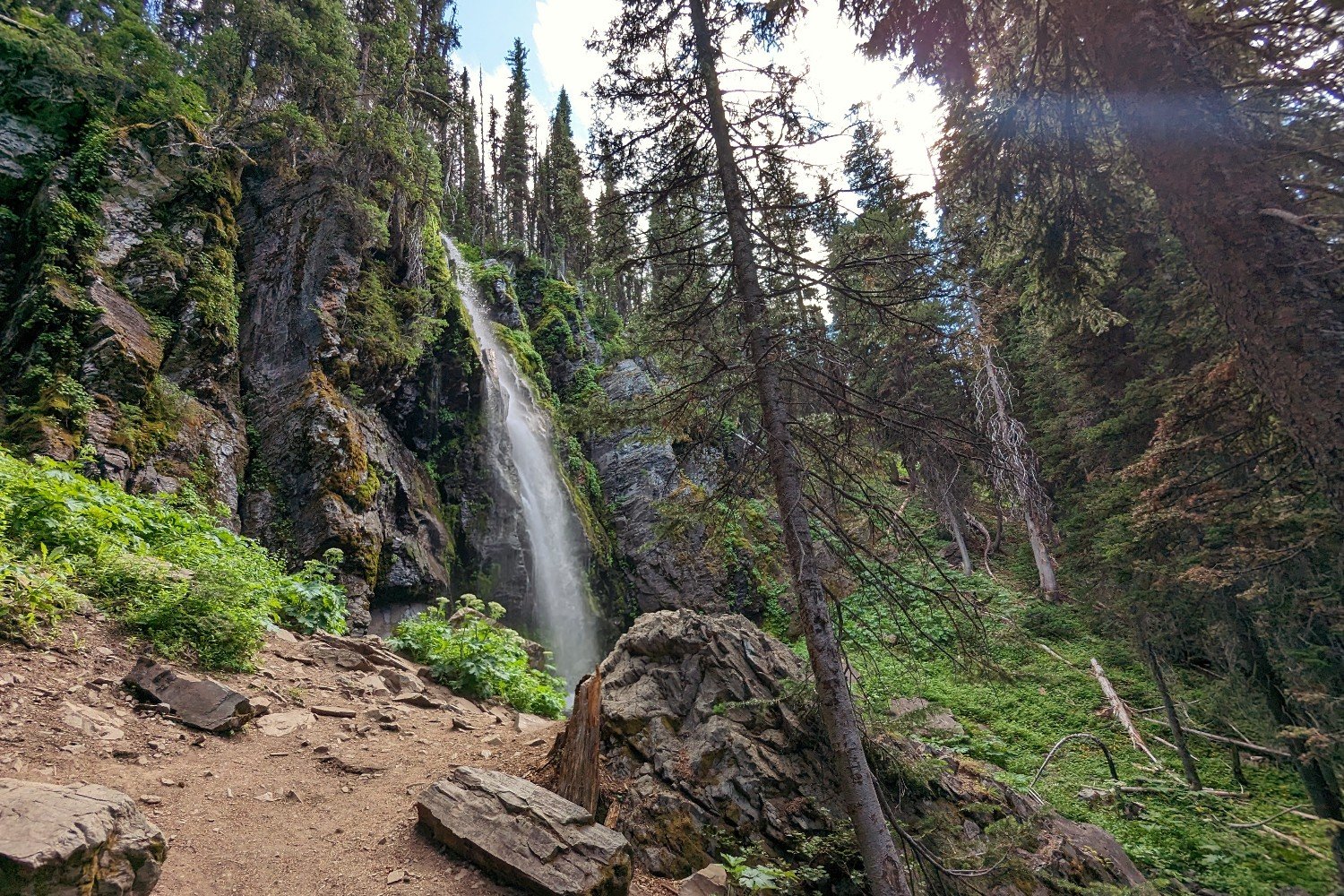
Strawberry Falls – PHOTO CREDIT: CASEY HANDLEY (CLEVERHIKER.COM)
Shortly after the waterfall, you’ll come to a junction with the Little Strawberry Lake Trail on your left. We highly recommend taking this short diversion to see the beautiful lake surrounded by high cliffs. We saw our first six mountain goats of the trail on the rocky faces above this lake. There are also a ton of good camping opportunities here, but mosquitoes can get pretty bad in the summer.
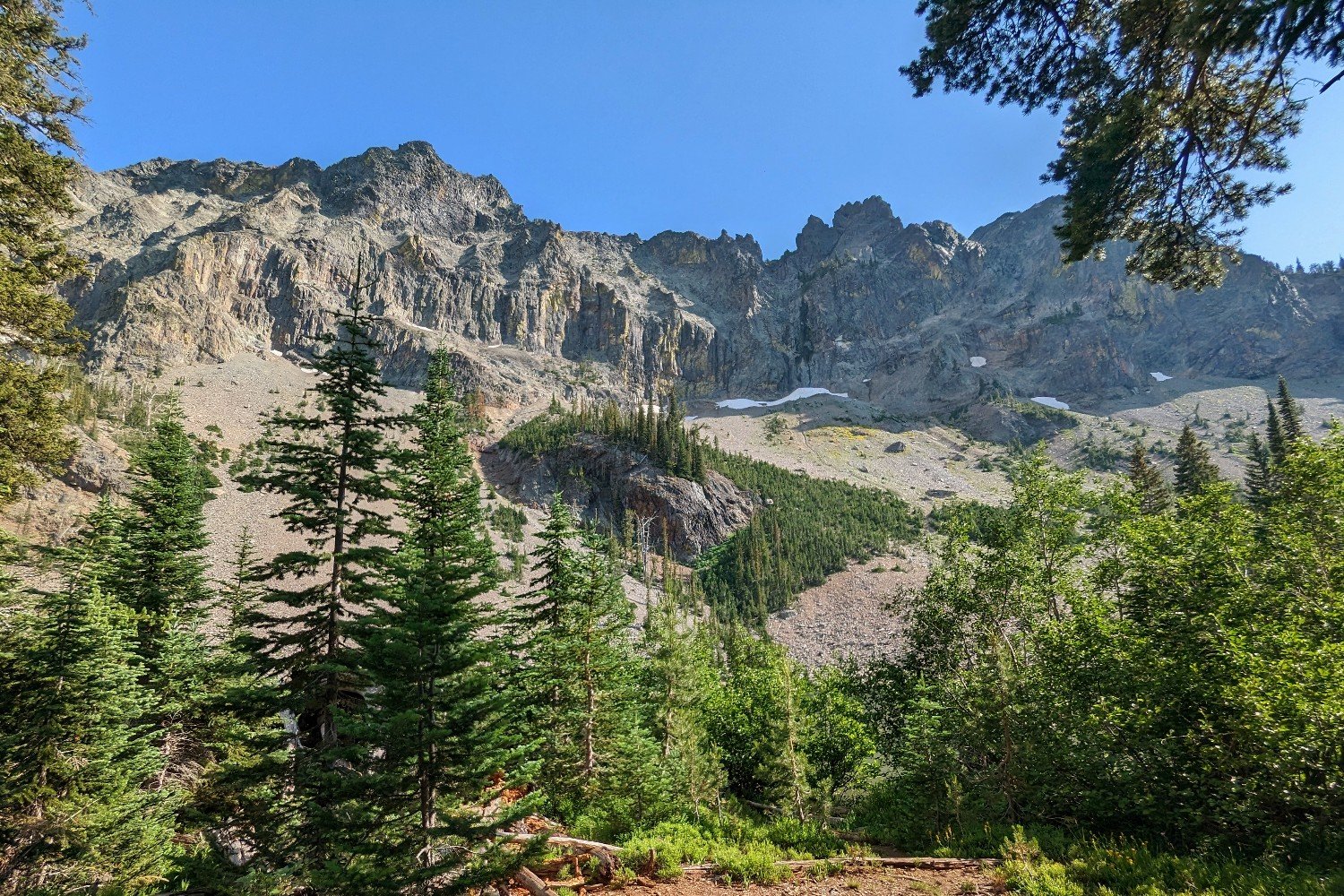
Cliffs surrounding Little Strawberry lake – PHOTO CREDIT: CASEY HANDLEY (CLEVERHIKER.COM)
If you took the side trip to the lake, go out the same way you came in and turn left to continue down the trail. If you didn’t take the side trail, just continue forward. From here you’ll be gradually ascending a little over 1,000 ft. over the next three miles. You’ll pass several springs and some good camping opportunities. We decided to camp at the last spring near the remains of a wooden cabin so we would be fresh for the rest of the climb to the top of the highest peak in the Malheur National Forest – Strawberry Mountain. There will likely not be any water for about seven miles after this, so definitely stock up here.
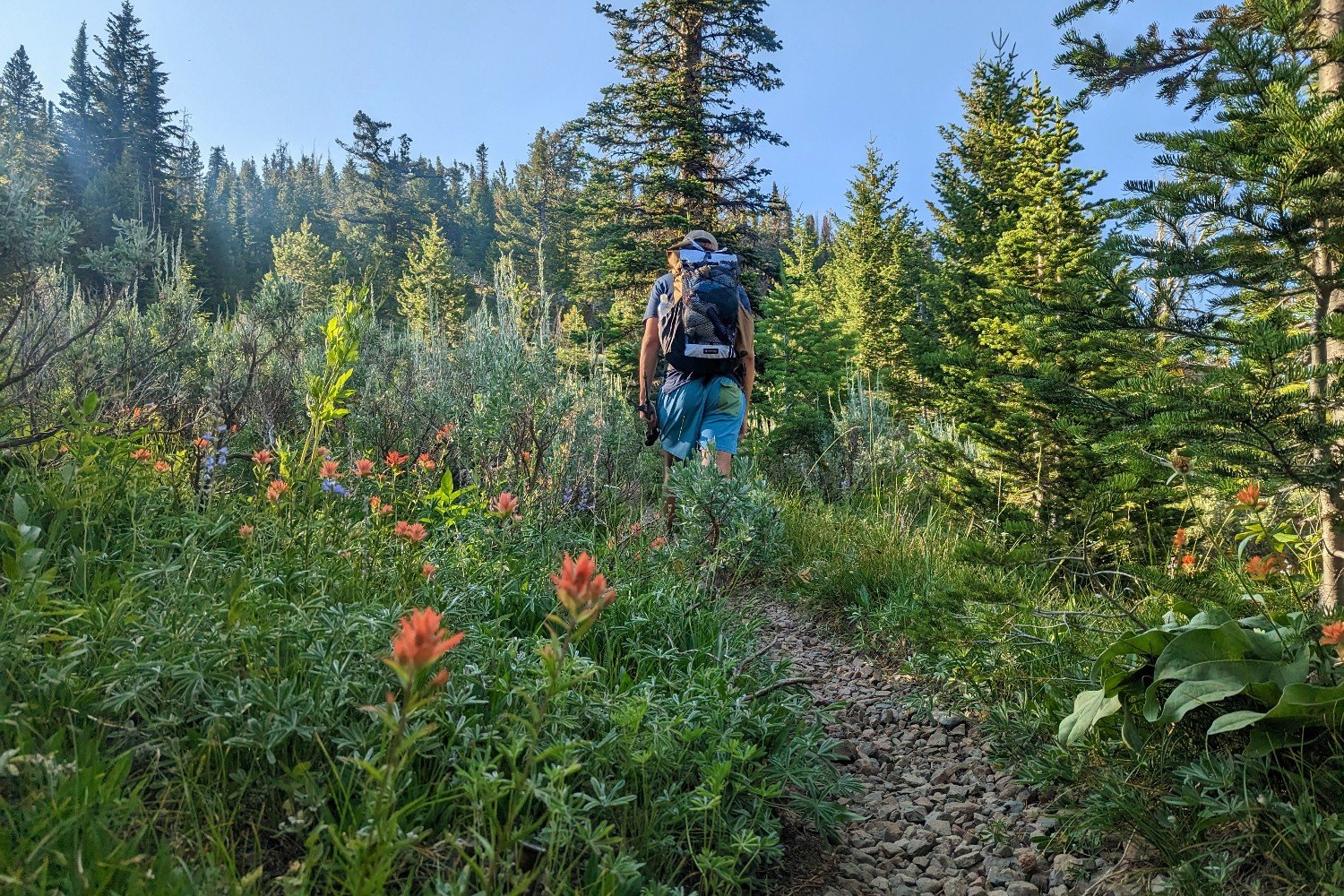
Wildflower meadows with springs – PHOTO CREDIT: CASEY HANDLEY (CLEVERHIKER.COM)
Continuing up the Strawberry Basin Trail, you’ll come to a signed junction pointing the way to Strawberry Mountain. Turn right to take this trail if you’re going for the peak – we highly recommend summiting this mountain. We saw another mountain goat on the way up, and the views from the top are unreal. It’s only a mile to the summit and a little over 600 feet of elevation gain – which you’ll do the majority of in the last .3 mile push to the top. If you don’t plan to climb the mountain, continue forward on the Onion Creek Trail – there are still plenty of beautiful views ahead.
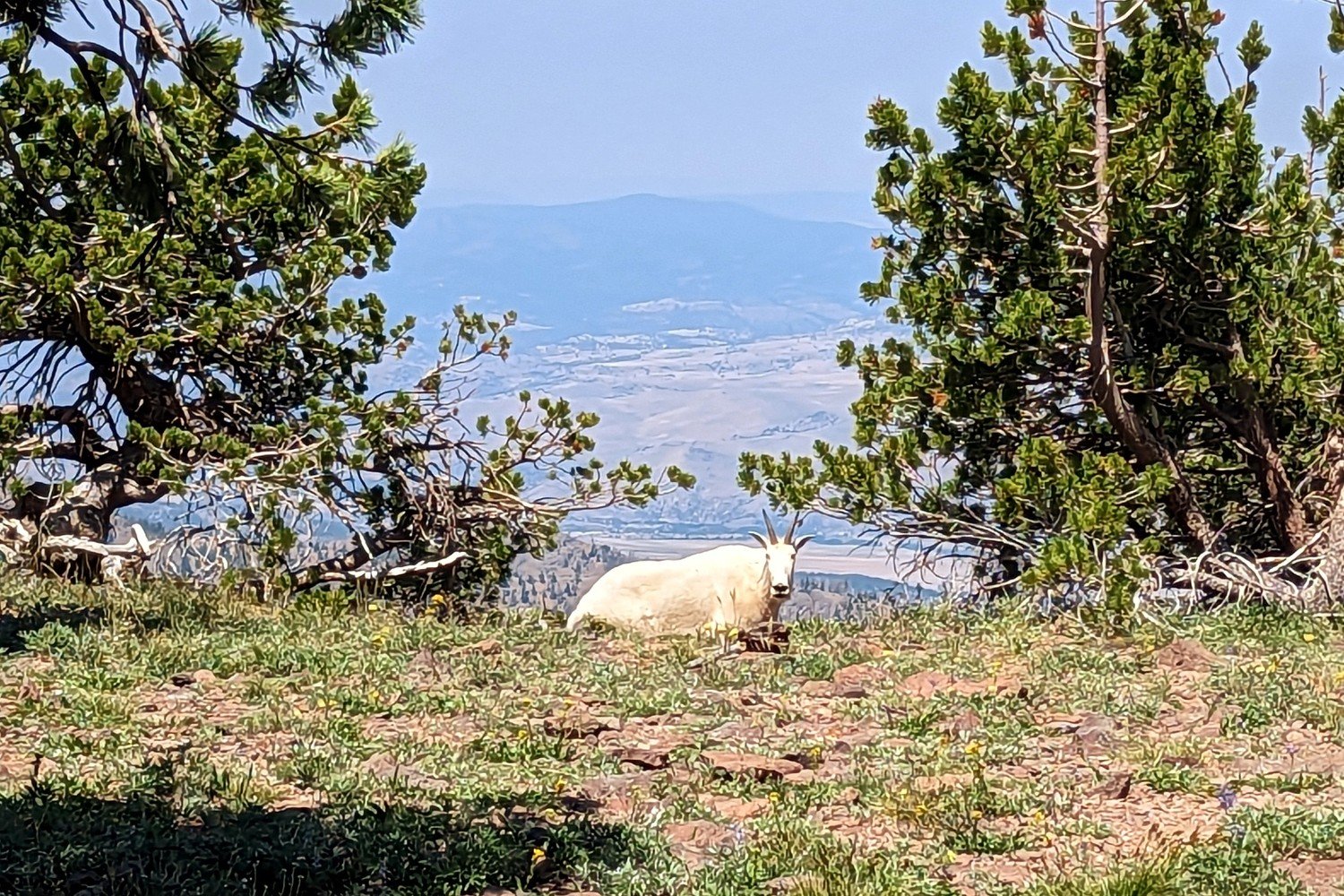
Just under the summit of Strawberry Mountain – PHOTO CREDIT: CASEY HANDLEY (CLEVERHIKER.COM)
If you summited, congrats! Return the same way you came up, and turn right where you left the trail to join the Onion Creek Trail.
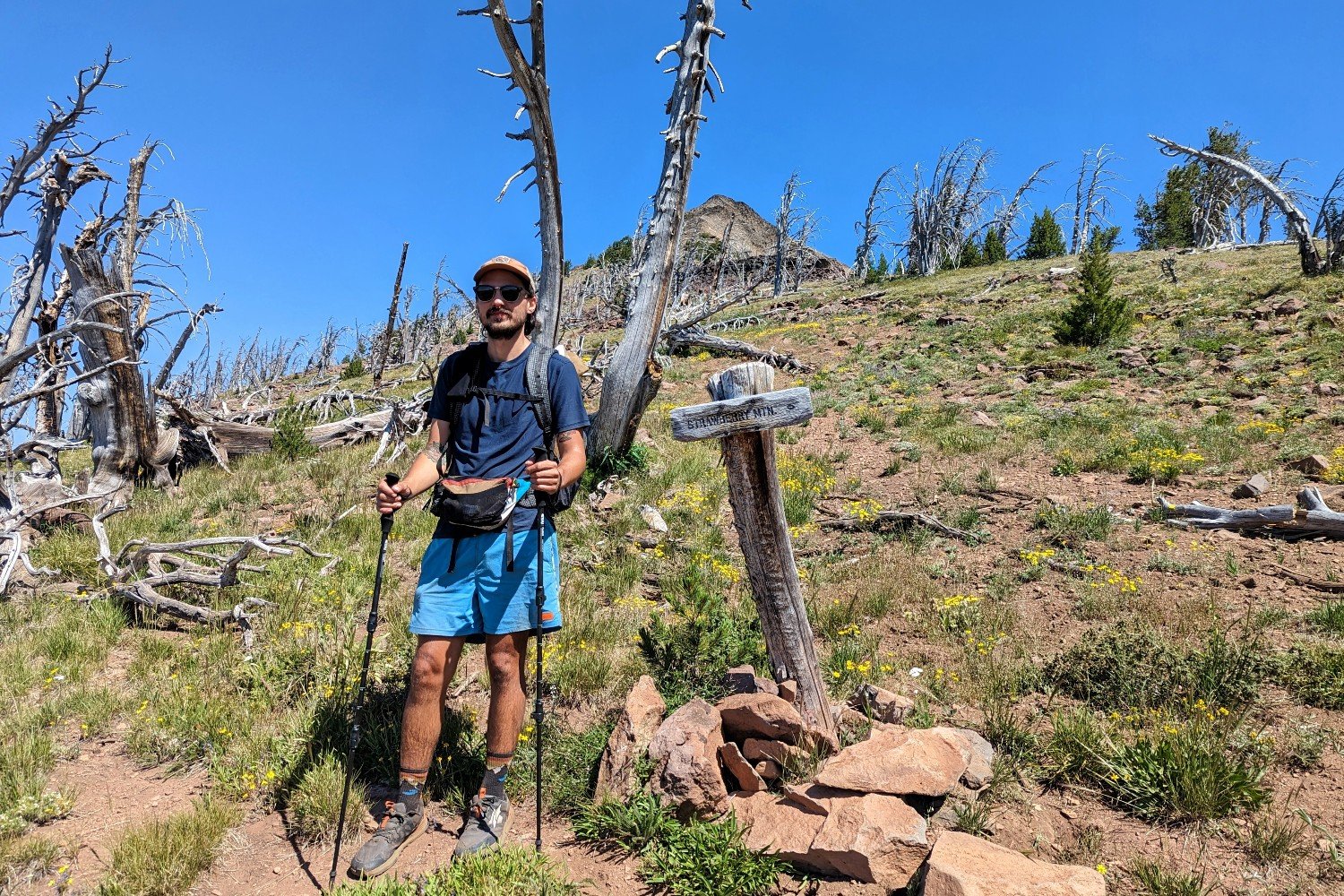
Strawberry Summit spure trail – PHOTO CREDIT: CASEY HANDLEY (CLEVERHIKER.COM)
The Onion Creek Trail will take you across a wildflower-filled ridge with some burned trees. You’ll travel down what appears to be an old dirt road with stunning views (don’t forget to look behind you to catch one last glimpse of Strawberry Mountain) before joining an actual dirt road near the Road’s End Trailhead. Continue ascending on the dirt road until you reach the High Lake Rim Trailhead.
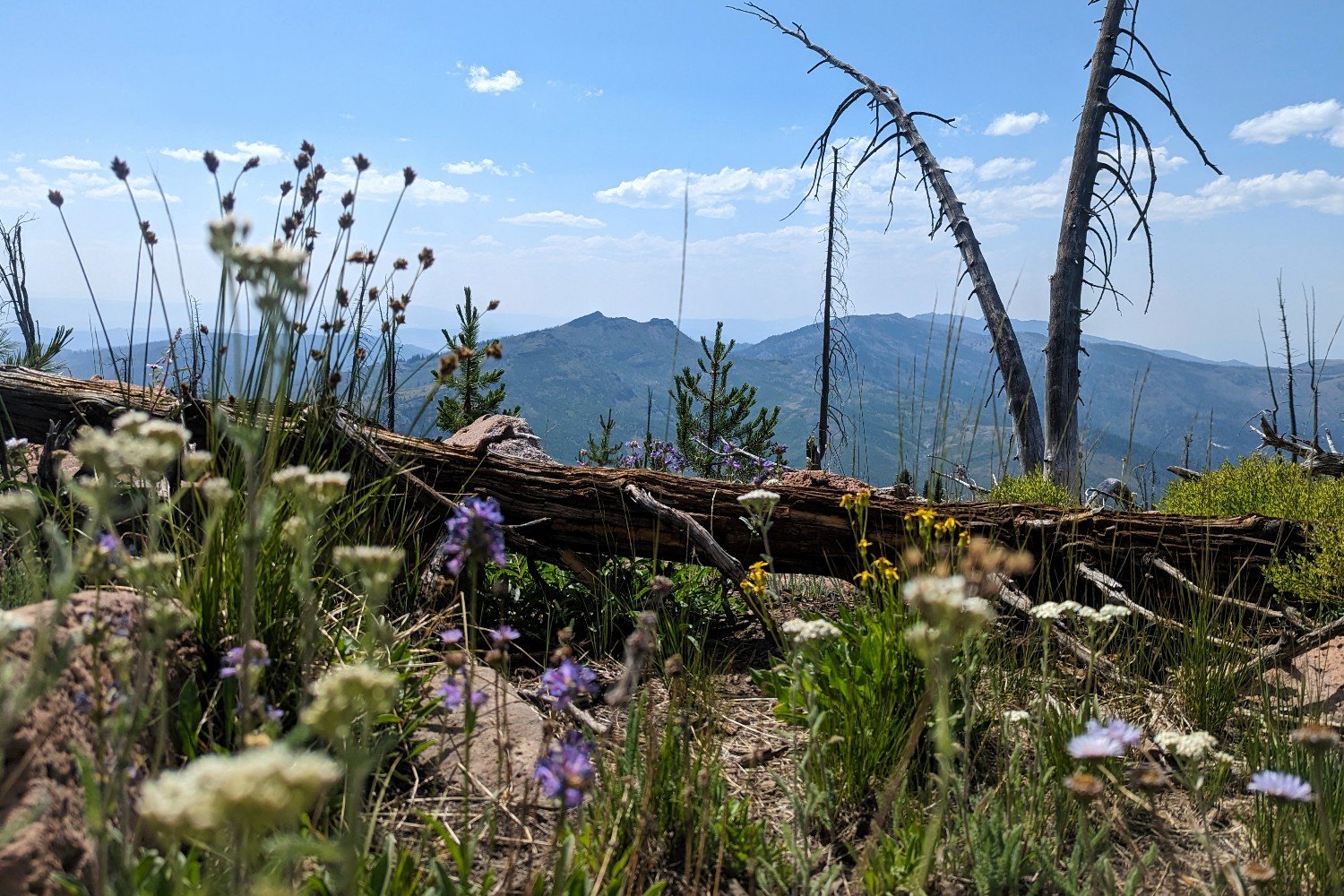
PHOTO CREDIT: CASEY HANDLEY (CLEVERHIKER.COM)
From here, you’ll descend down to High Lake and your first reliable water in seven miles. On one of the last switchbacks, there’s a spring about 30 ft. or so off trail. We chose to fill up here instead of using the lake. There are good campsites at High Lake, but you’re likely to be sharing the area with other campers and fishers since it’s an easy hike in from the trailhead.
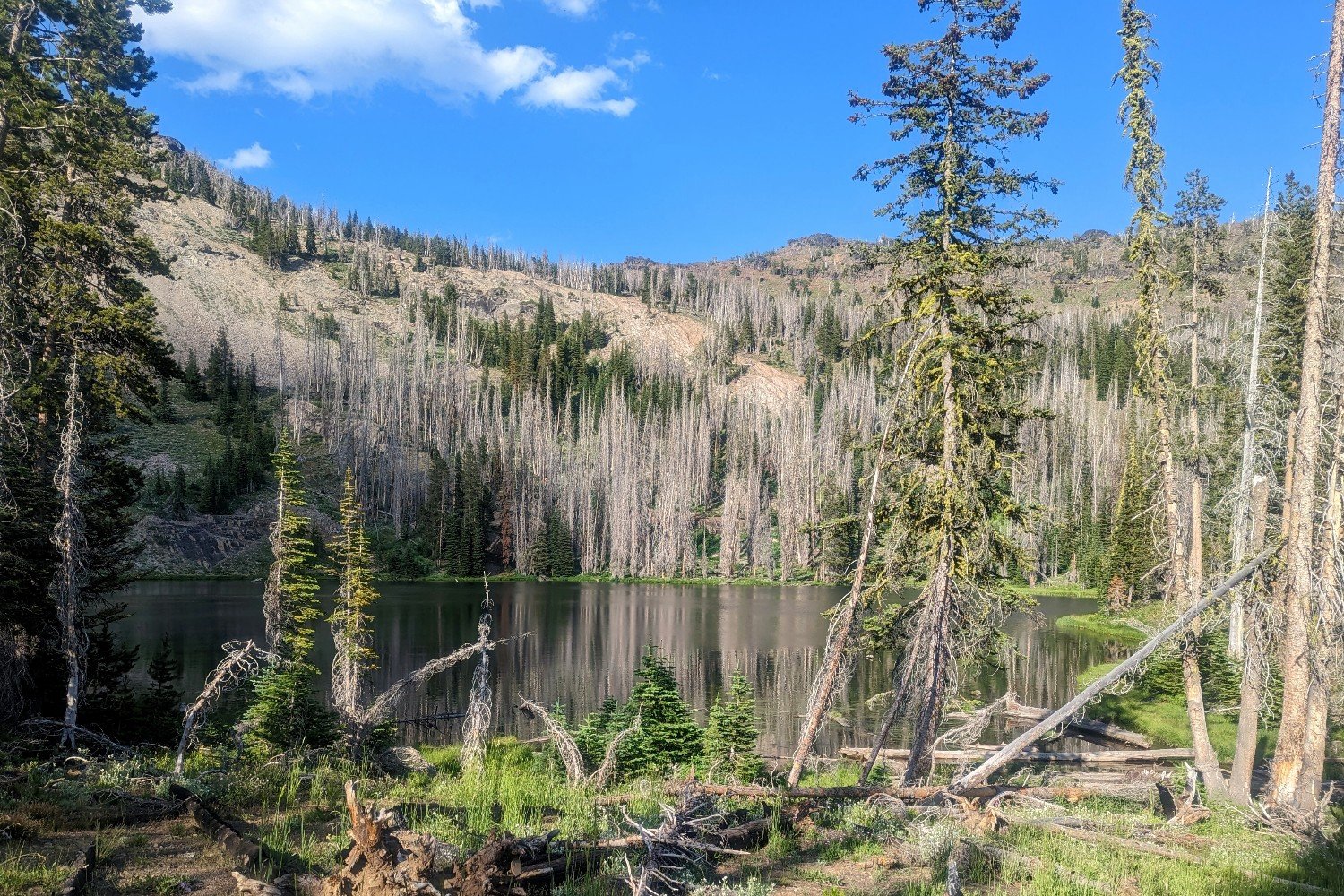
High Lake – PHOTO CREDIT: CASEY HANDLEY (CLEVERHIKER.COM)
At the time we hiked the trail, the sign pointing you towards your next waypoint (Slide Lake) was downed and facing the wrong direction, so be sure to pay close attention here. If you’re using Avenza, watch your GPS dot for a bit to make sure you’re on the correct trail. You should be ascending gradually on a trail that becomes more and more worn in as you get further from the campsites at High Lake.
Just before the top of the ridge, we saw a group of about 30 mountain goats (some with babies!) grazing here. So keep an eye out in the grassy forest ahead. From here all the way to the end of the trail, you’re likely to see a ton of mountain goat tracks along your path.
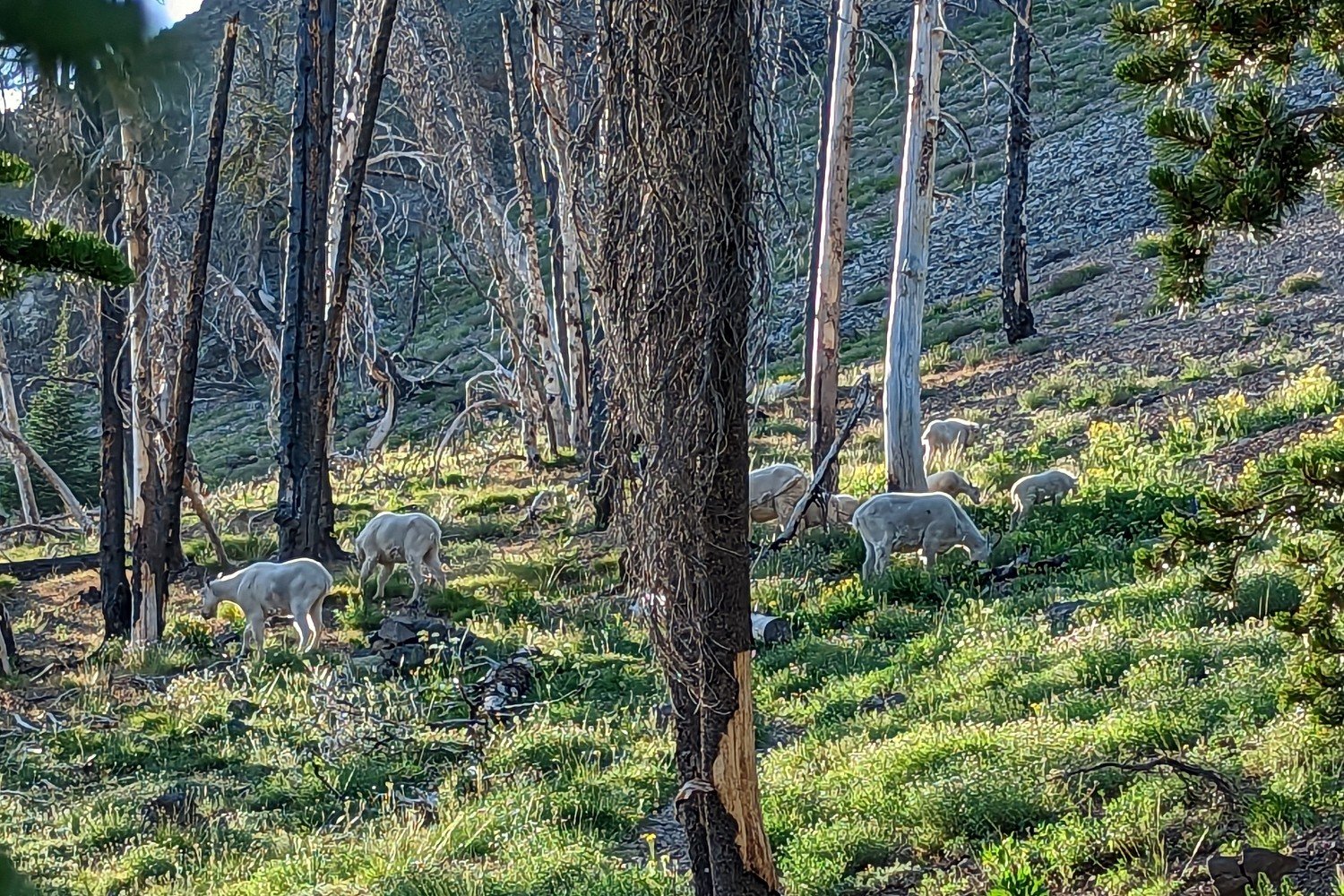
PHOTO CREDIT: CASEY HANDLEY (CLEVERHIKER.COM)
Once you crest the ridge, you’ll start descending to Slide Lake via a narrow and rocky path. The junction to Slide Lake will be on your right once you’re down in the valley. We took this short side trail and camped near the lake for our second night. The views from this lake aren’t as impressive as the others, but it’s still lovely in its own right. We had several deer visit our campsite here, and we heard fish jumping in the lake all morning. Whether you’re camping here or not, you’ll probably want to hit the small stream across this side trail as it’s your last reliable water until you get back to the trailhead. There are a couple of small springs that cross the actual trail nearby, but we’re not sure if they’re reliable. They were flowing weakly when we came through in late July.
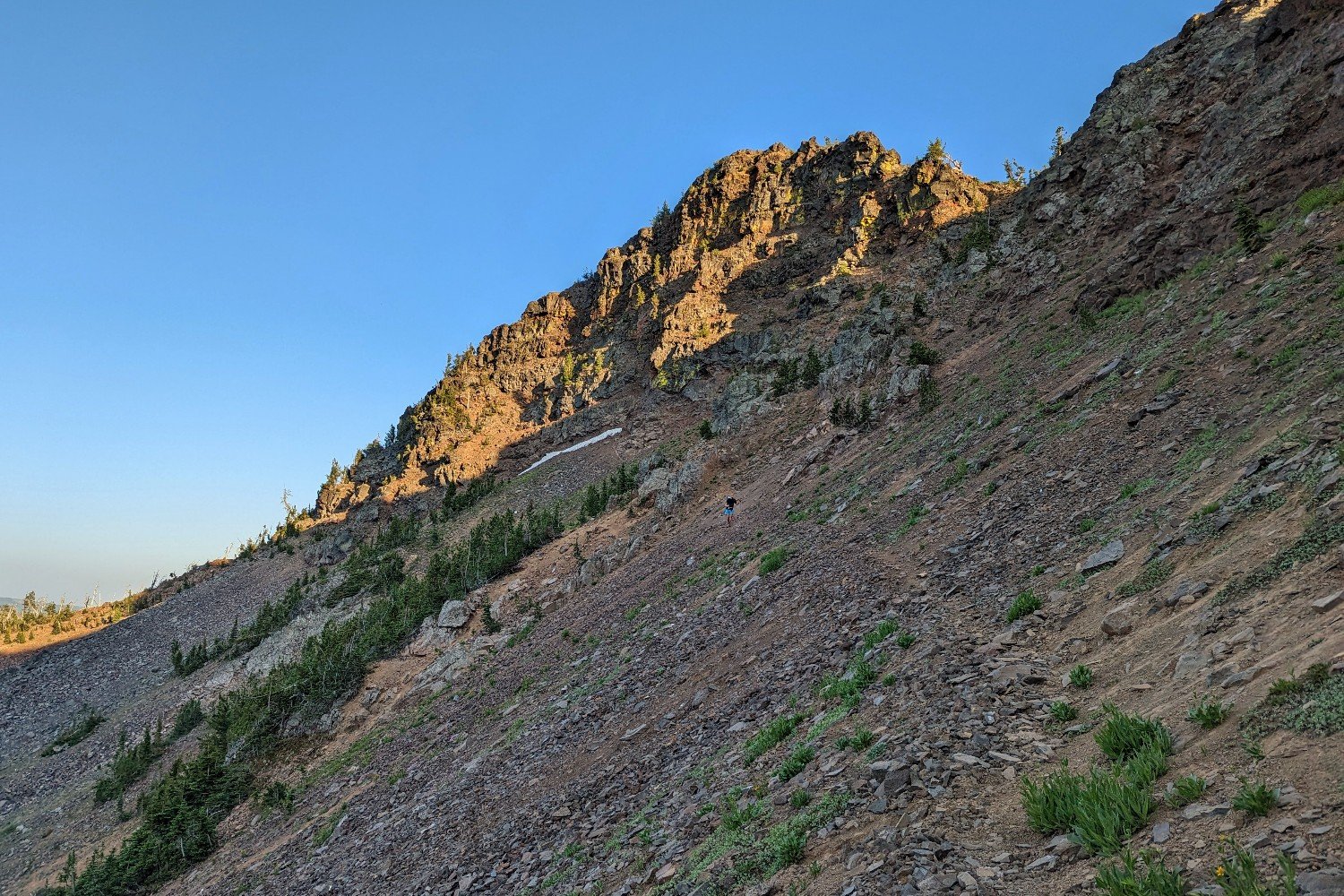
steep scree field – PHOTO CREDIT: CASEY HANDLEY (CLEVERHIKER.COM)
After Slide Lake, you will encounter what is undoubtedly the sketchiest part of the trail. A faint line sneaks across a steep scree field with fall risk and unsure footing. The views are beautiful, and the challenge was pretty fun. But it’s not something we’d want to do in bad weather. Alternatively, you can turn right before this section to head down the lower elevation horse route. If you decide to traverse the scree field, just go slow. It’s not long, and we thought the scenery was worth the bit of anxiety.
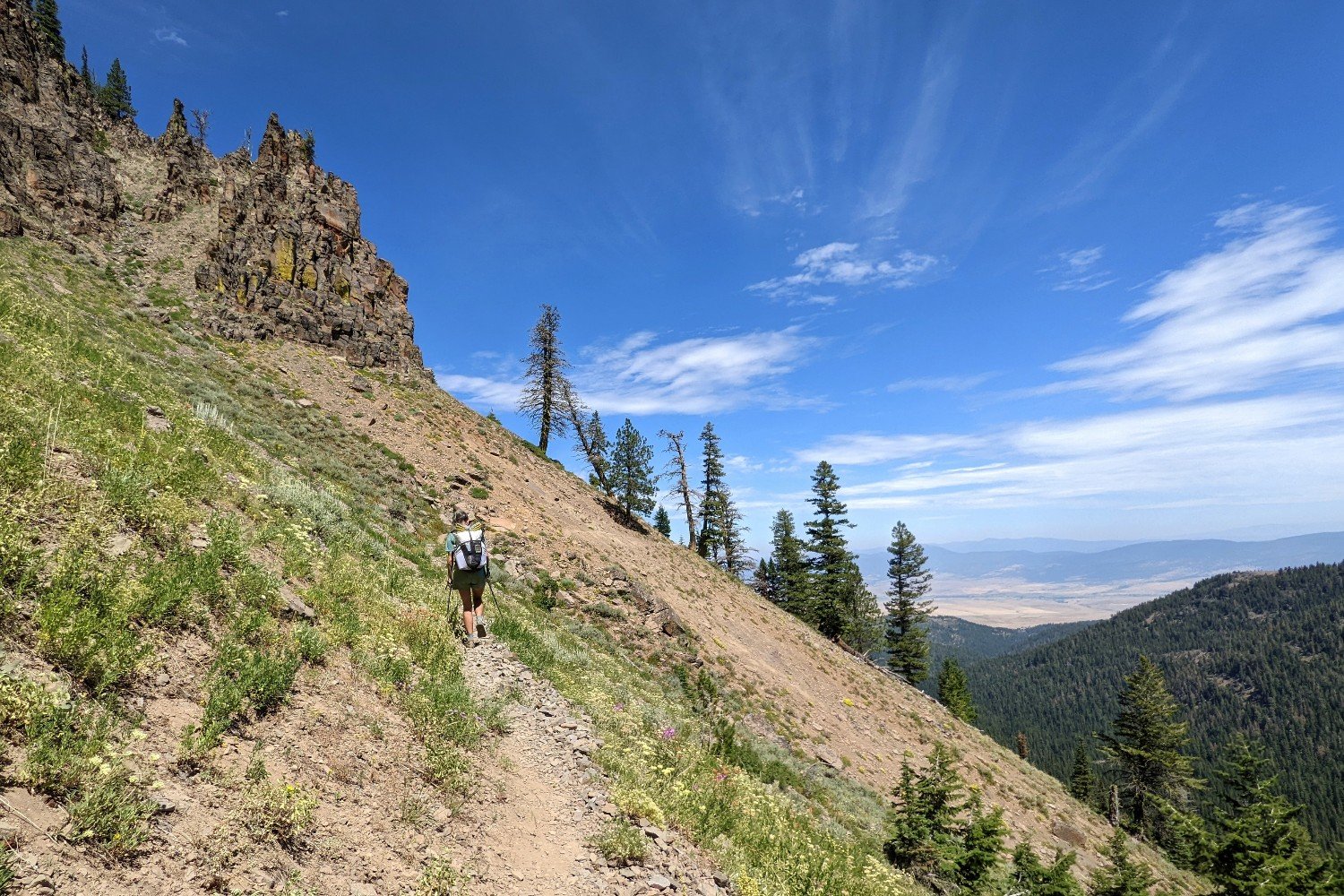
Steep scree field – PHOTO CREDIT: CASEY HANDLEY (CLEVERHIKER.COM)
After you get through the scree field, you only have about a mile left until the junction with the Strawberry Basin Trail where you’ll turn right to head back to the trailhead where you started. Once you’re back on the Strawberry Basin Trail, you’ll descend on nicely graded switchbacks for a mile down to the parking area.
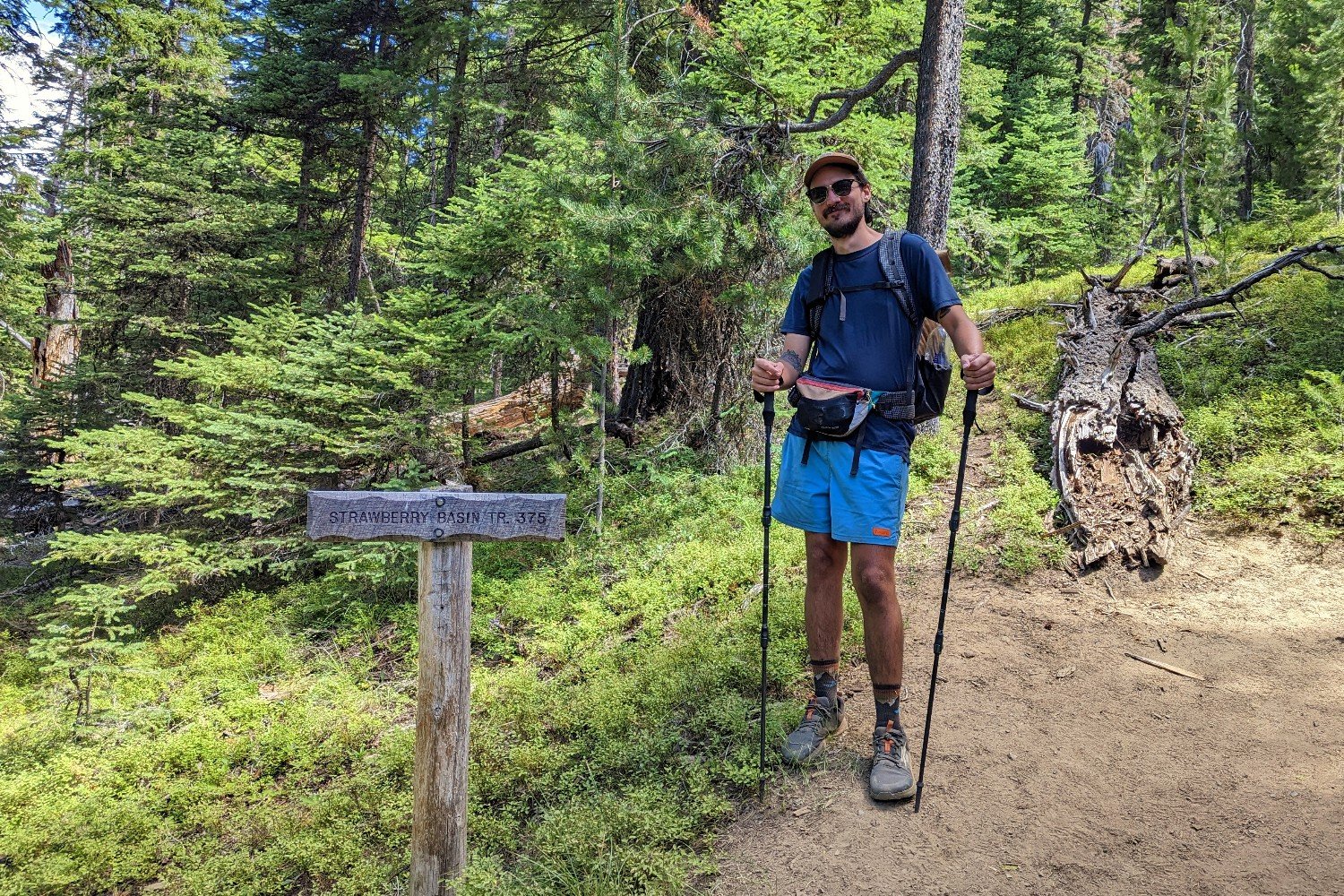
PHOTO CREDIT: CASEY HANDLEY (CLEVERHIKER.COM)
Backpacking Gear: What to Pack
We prefer lightweight backpacking because it allows us to cover more ground with less effort, and we can focus more on enjoying our hike rather than being bogged down by excess gear/weight. For more recommendations on our favorite lightweight backpacking equipment, check out the CleverHiker Gear Guide and our Top Picks page.
TENT: This trail is pretty rocky, and it can be difficult to get tent stakes into the ground. We recommend going with a lightweight freestanding tent to avoid difficult pitches on stubborn ground. Our current favorites are the Big Agnes Copper Spur UL2 / UL3 for hikers who prioritize keeping weight as low as possible, and the REI Half Dome SL 2+ / SL 3+ for those whose main concern is a good balance between weight and price. Learn more about our top picks on our list of the Best Backpacking Tents.
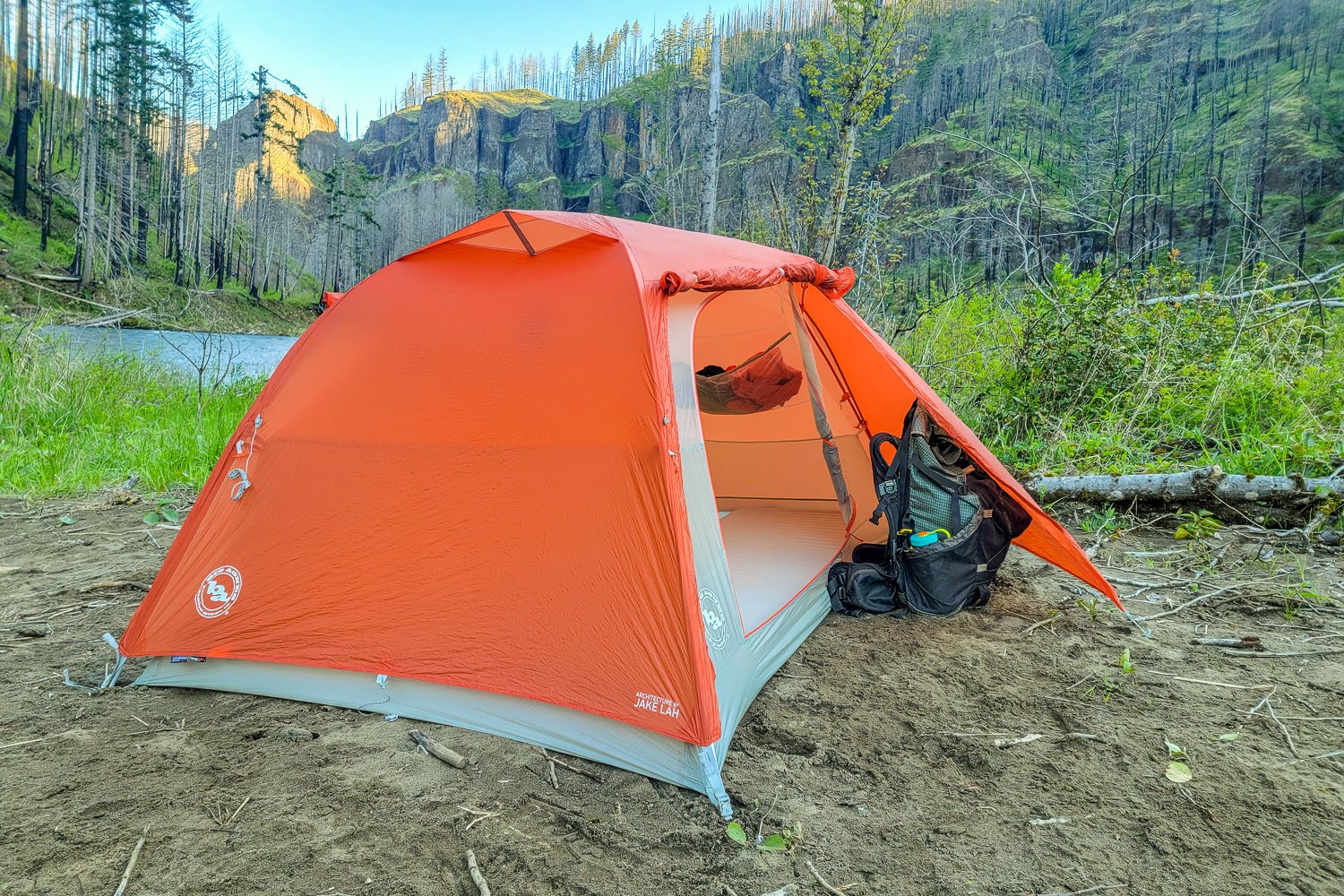
SLEEPING BAG/QUILT: We hiked this trail in late July with the Katabatic Flex 22 and HMG Unbound 20 quilts. We were very happy with these choices and think a quilt is the way to go for summer hikes like this one that have big changes in elevation.
With a quilt, you can always cinch it up tight on chilly nights, or open it fully for plenty of ventilation on hot evenings.
We have plenty of other quilt options for any budget on our Best Backpacking Quilts list. Or if you prefer the added coverage of a sleeping bag, head over to our list of the Best Sleeping Bags to see our top lightweight picks.
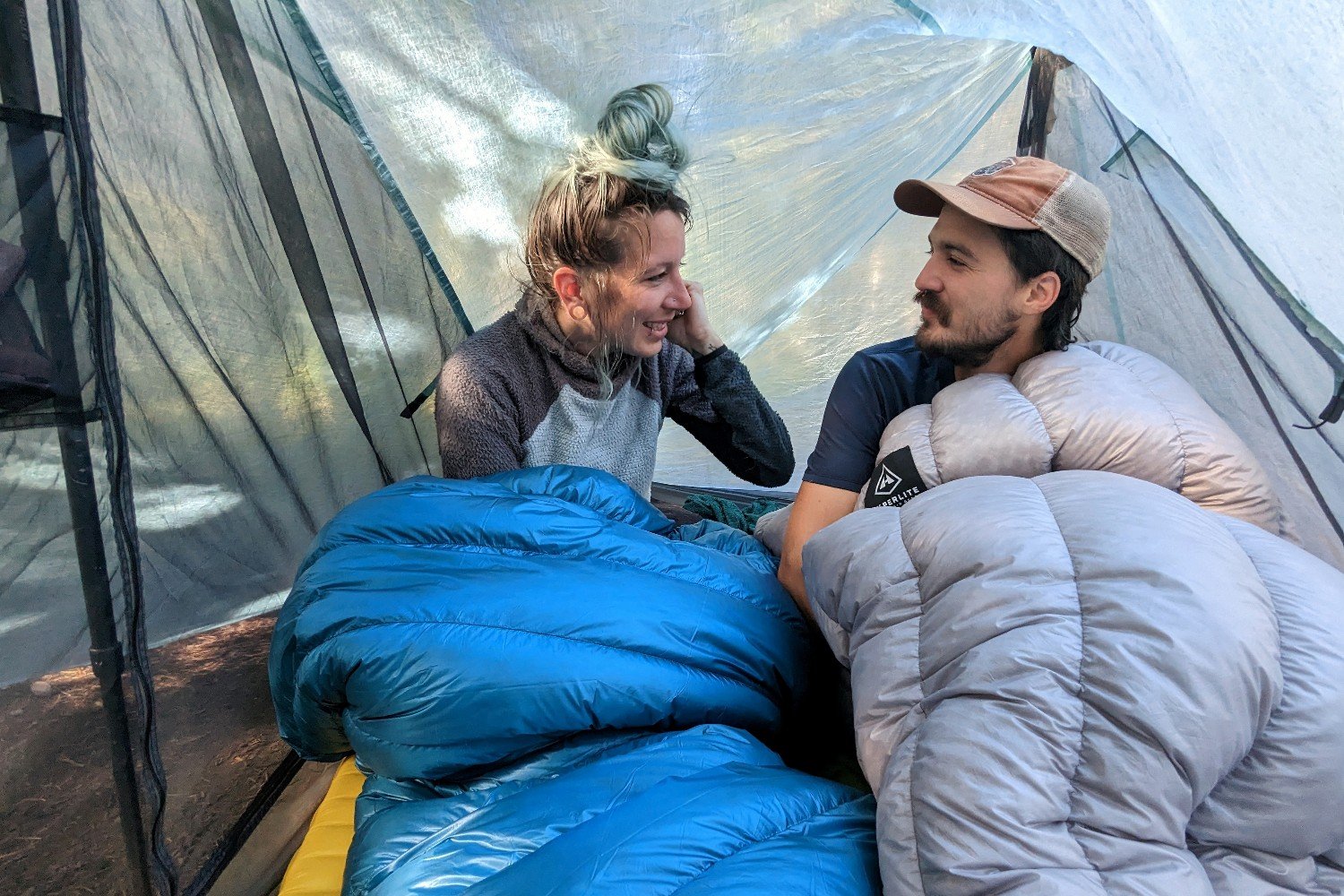
SLEEPING PAD: Because you’re pretty likely to end up in a rocky campsite, we think the most comfy option would be a lightweight air pad. We used the Therm-a-Rest NeoAir XLite NXT and the Klymit Static V2 for this hike, and we found them plenty insulative for this trip. You can read more about both of these pads on our Best Backpacking Sleeping Pads.
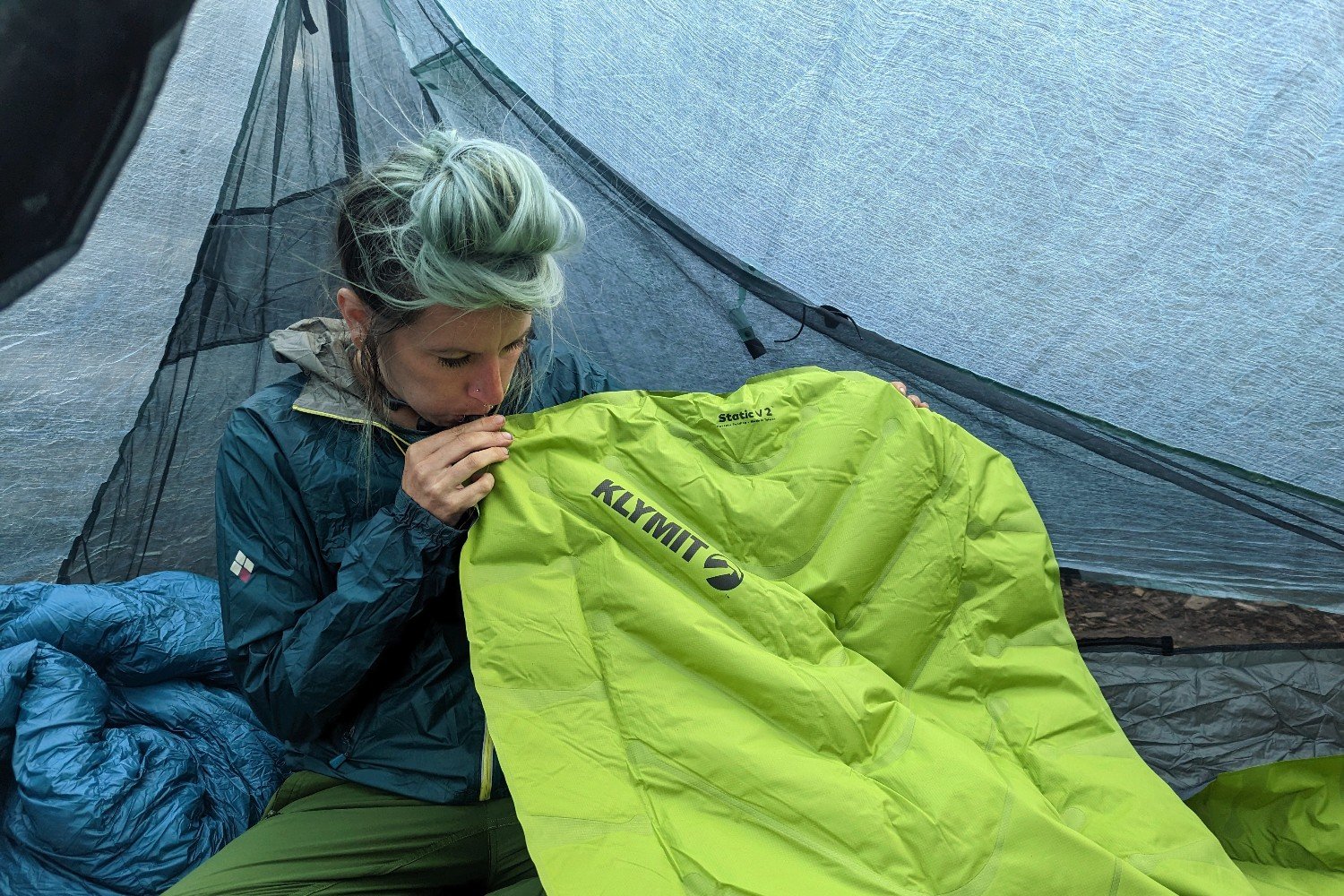
BACKPACK: The best backpack to take on any trail is the one you find most comfortable. For us, that meant going as light as possible to make the elevation gain easier. We took the Nashville Pack Cutaway and Atom Packs Atom+, and we really loved the convenient design of both of these ultralight backpacks.
Not everyone wants or needs to go so minimal, though, and we have a whole list of our top backpacking packs if you prefer more capacity and padding. Our current favorites from this list are the HMG Unbound 40 for those who want the best balance of low weight and support, or the REI Flash 55 (men’s / women’s) for hikers looking to go light on a budget.
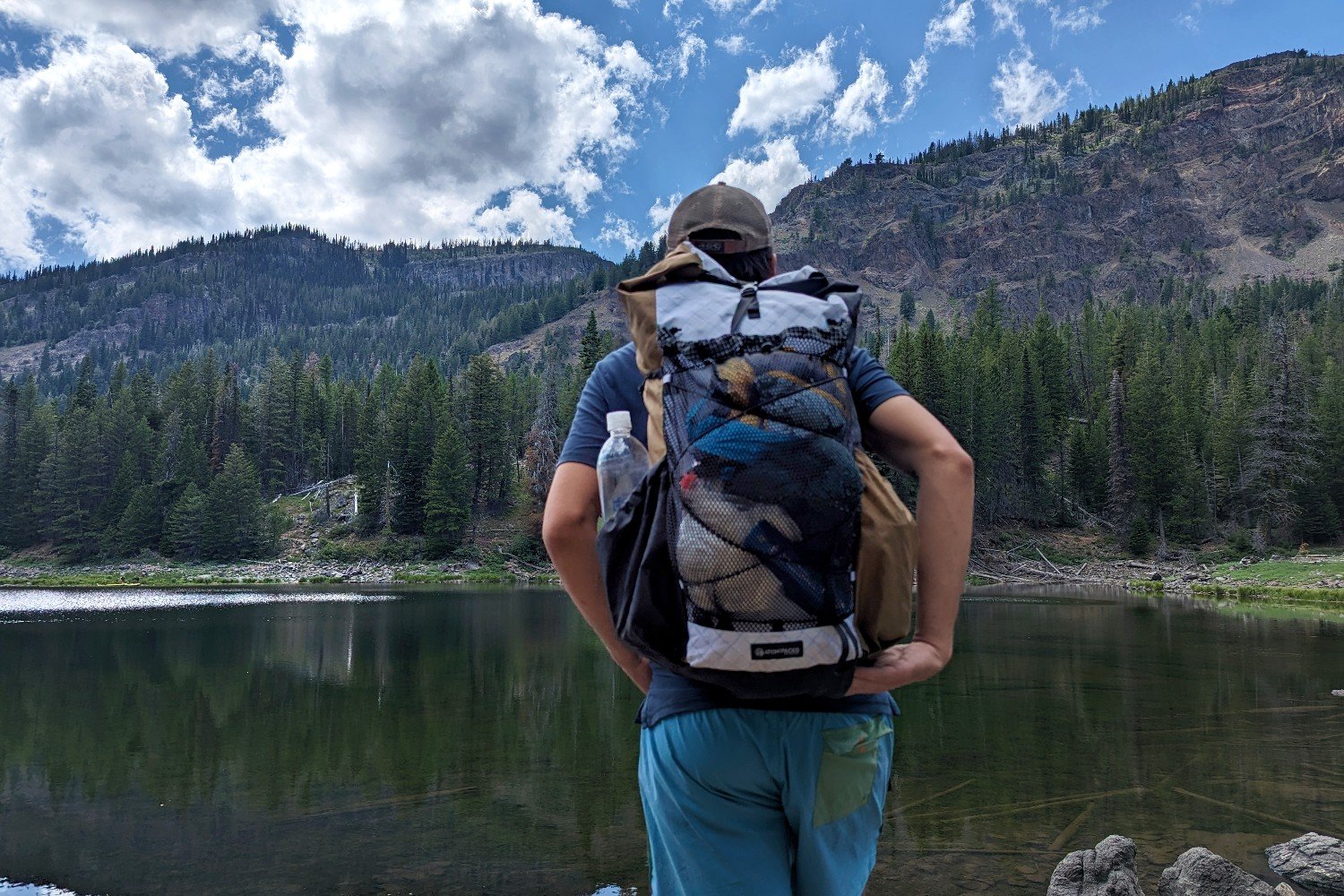
COOKING SYSTEM: We cooked our meals together in a shared pot, so we took the Soto WindMaster for its efficient performance and the Vargo Bot for its large capacity. Build your perfect backcountry cooking setup with our lists of the Best Backpacking Stoves and Best Backpacking Cookware.
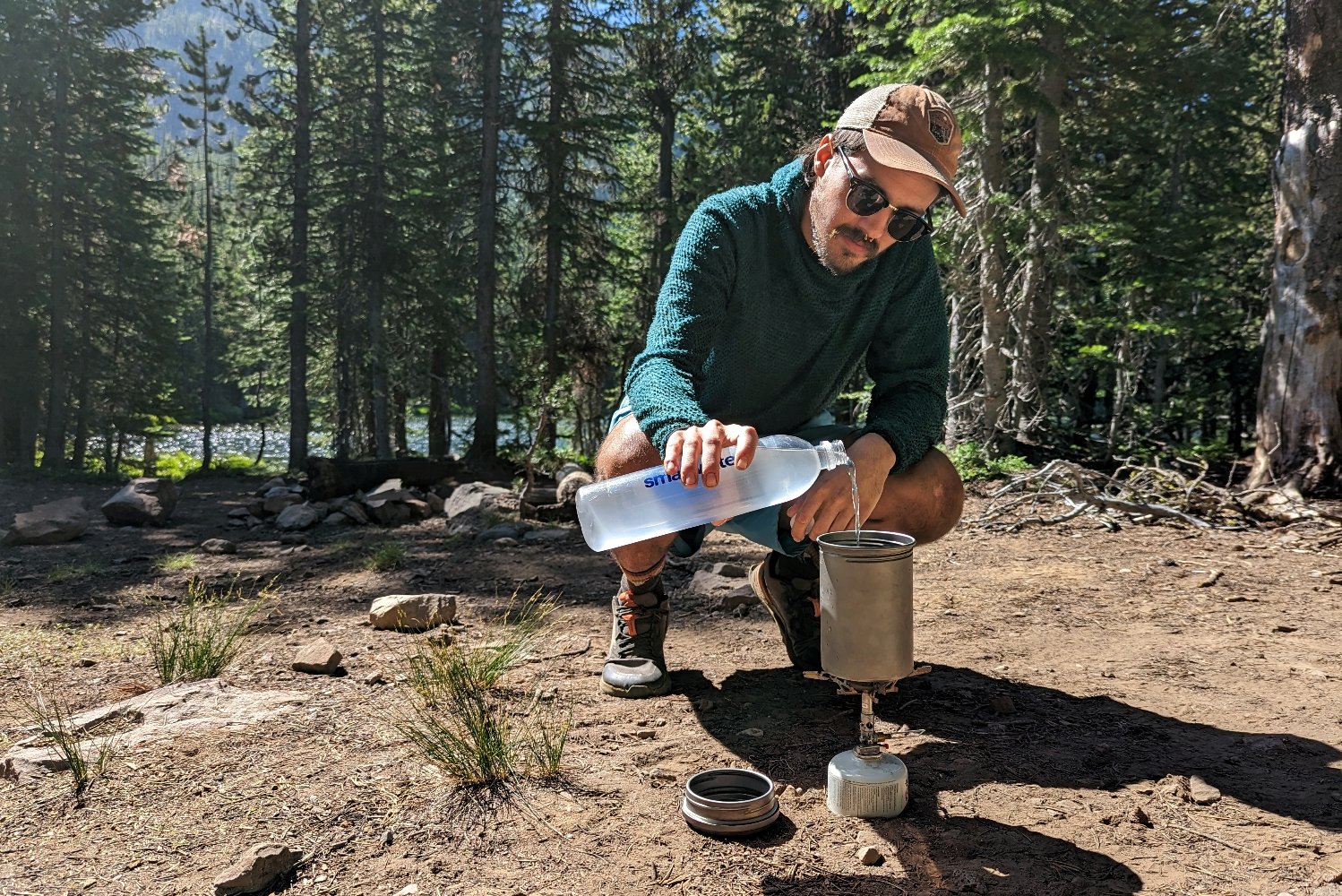
FOOD: Since this trip is fairly short, you don’t have to carry a heavy load of food, and you can afford to take along some extra luxuries if you’d like. Check out our guides on the Best Lightweight Backpacking Food, Best Freeze Dried Backpacking Meals, and Best Energy Bars for some of our go-to recommendations. There’s a good amount of sun exposure too, so we recommend taking some electrolyte mixes from our Best Hydration Mixes list.
FOOD STORAGE: Bear canisters aren’t required on this trail. But wildlife is abundant in this wilderness, and it’s always a good idea to store your food properly. We used Ursacks to keep critters from getting into our goods at night.
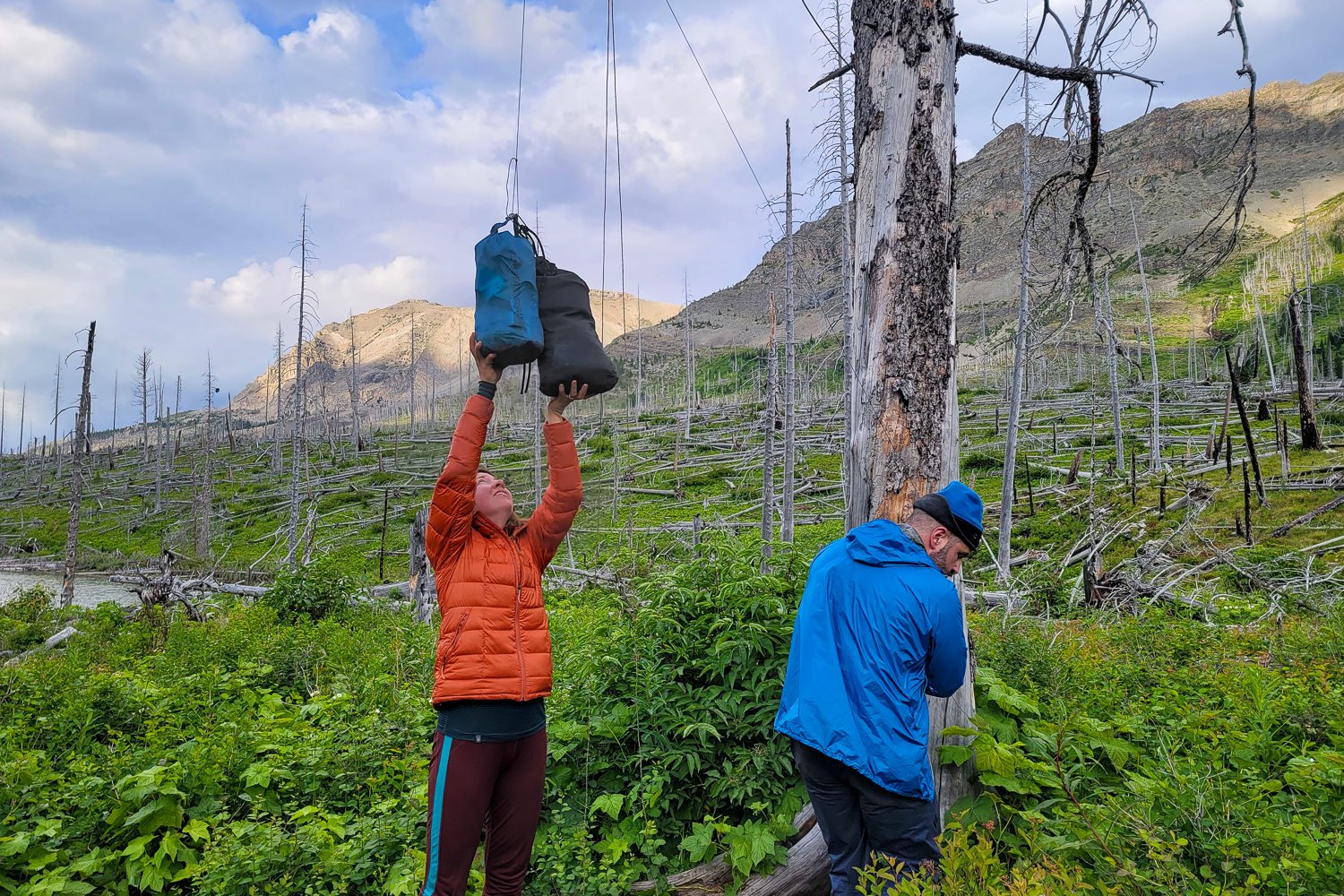
Ursack (right) – PHOTO CREDIT: Heather Eldridge (CLEVERHIKER.COM)
WATER FILTER: We mostly drank from the abundant springs flowing directly out of the mountains on this trail, so we weren’t overly concerned about unsafe water. We used Katadyn Micropur Tabs (chlorine dioxide), and waited 15 minutes before consuming water. If you prefer a filter, check out our top picks on our list of the Best Backpacking Water Filters. We like using the Katadyn BeFree in combination with the Hydrapak Flux Bottle because it’s easy to squeeze and collapses when not in use. Head over to our Best Water Bottles list to see all of the reasons we love the Flux.
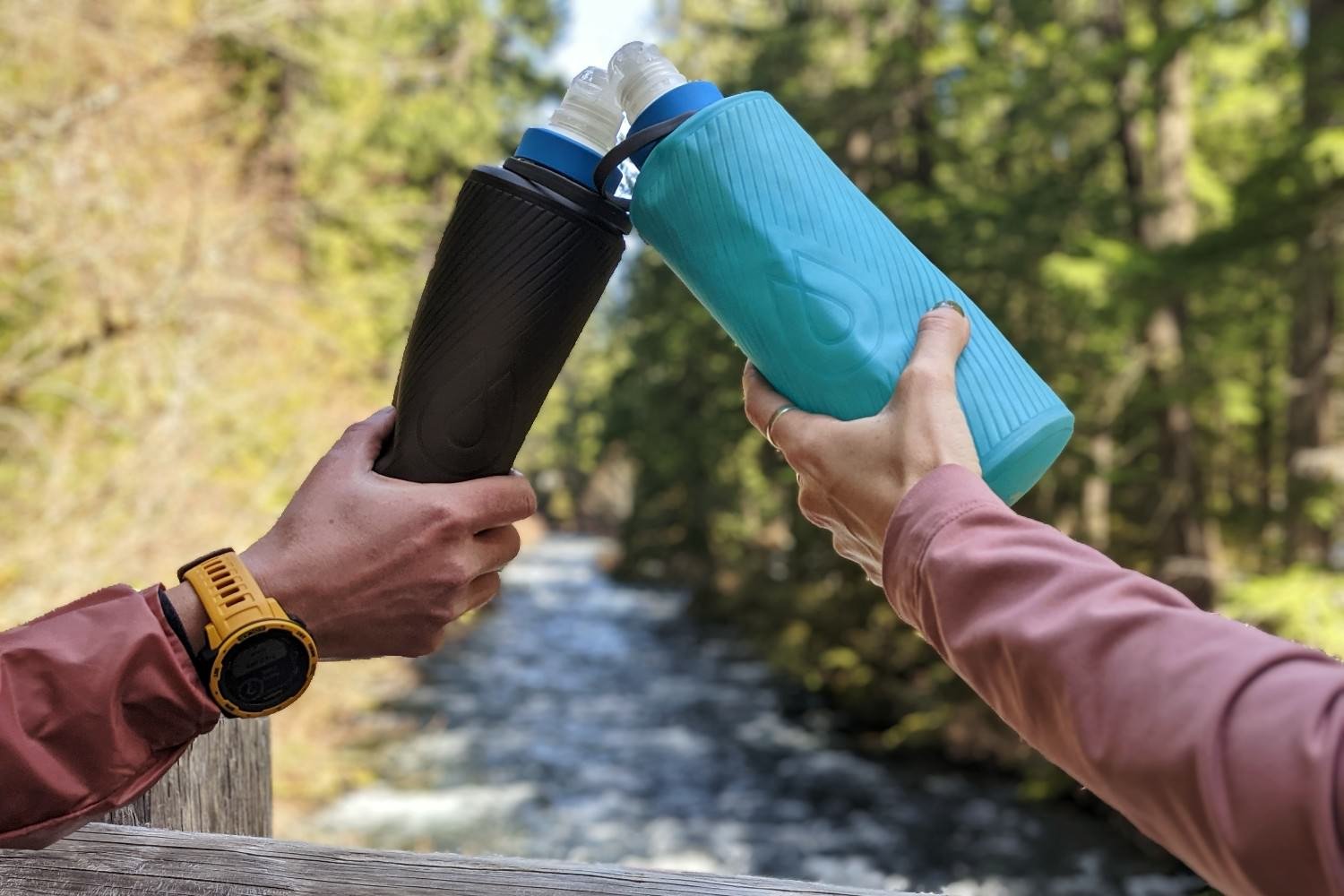
FOOTWEAR: This trail can be pretty rocky, so we recommend going with footwear that provides good underfoot support and solid traction on variable terrain. The Hoka Speedgoat 5’s (men’s / women’s) or Topo Ultraventure 3’s (men’s / women’s) would be good lightweight choices. Learn more about these shoes on our lists of the Best Hiking Shoes for Men and Women.
CLOTHING: Here are some of the clothing items we used/recommend on this trip in the summer. See more of our favorite hiking/backpacking clothing in our Gear Guides.
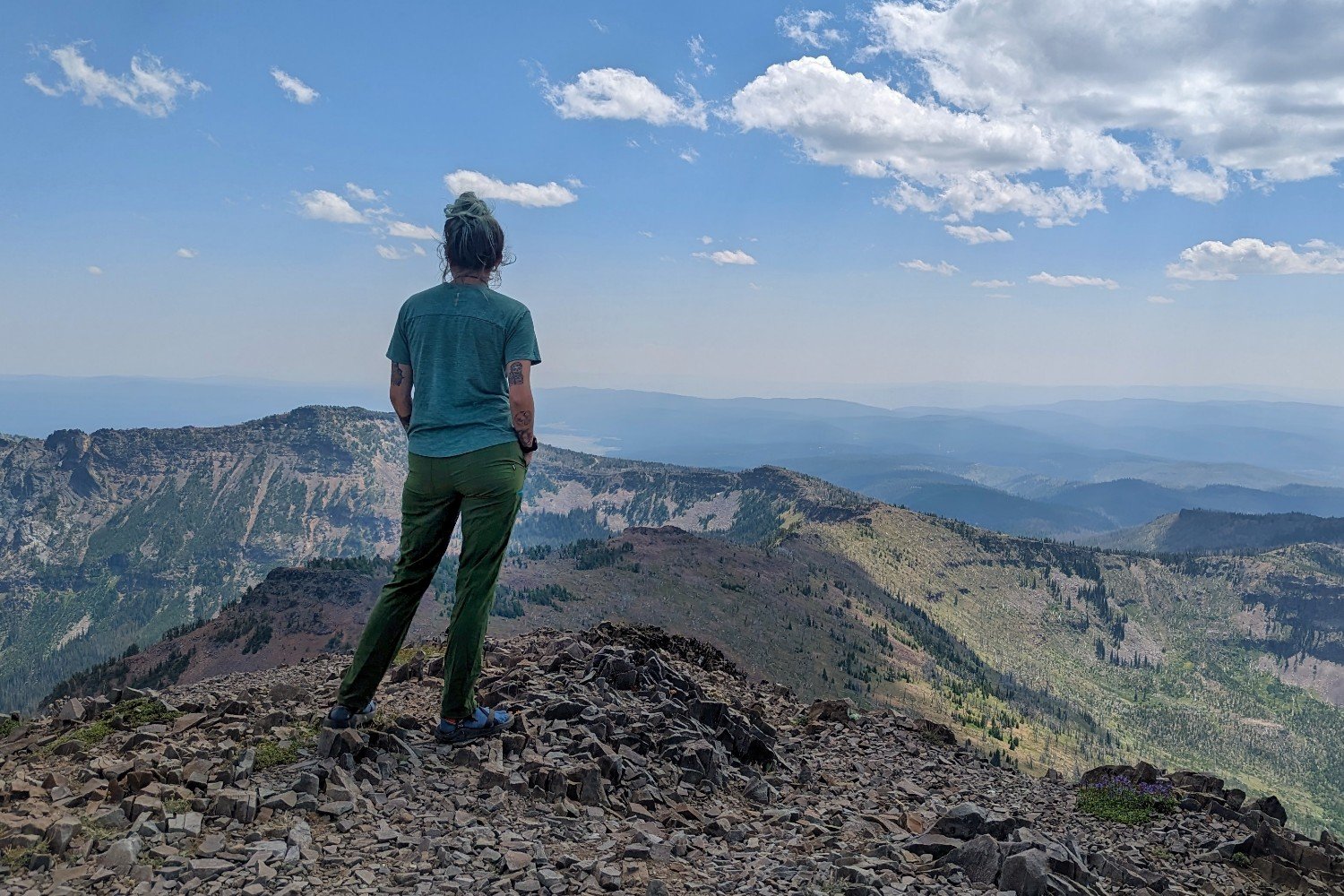
HEADLAMP: We took the Black Diamond Spot 400-R from our list of the Best Headlamps. It’s rechargeable, plenty bright, and a great value.
MAP: We used the Avenza phone app. for this trip and downloaded the Strawberry Mountain Wilderness Map before we left home.
FIRST AID KIT: Always bring a small personalized first aid kit; we used the .5 Adventure Medical Kit. Find the perfect kit for you on our list of the Best First Aid Kits.
SUN PROTECTION: Most of the Strawberry Mountain Wilderness Loop is exposed to the sun. Sunglasses (polarized recommended), sunscreen, and SPF lip balm are a must.
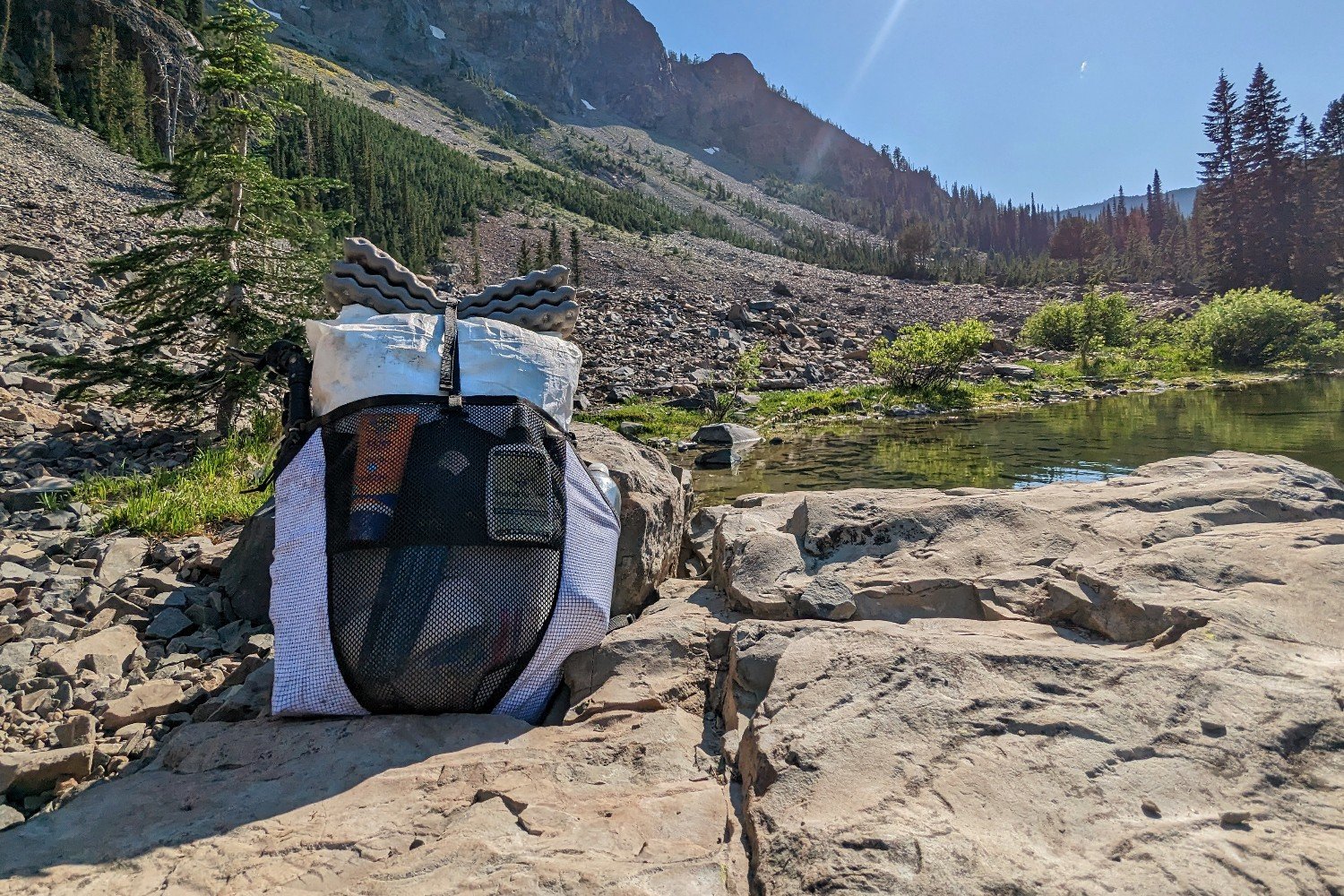
PHOTO CREDIT: CASEY HANDLEY (CLEVERHIKER.COM)
OTHER ITEMS:
MORE INFO – Ultimate Backpacking Checklist
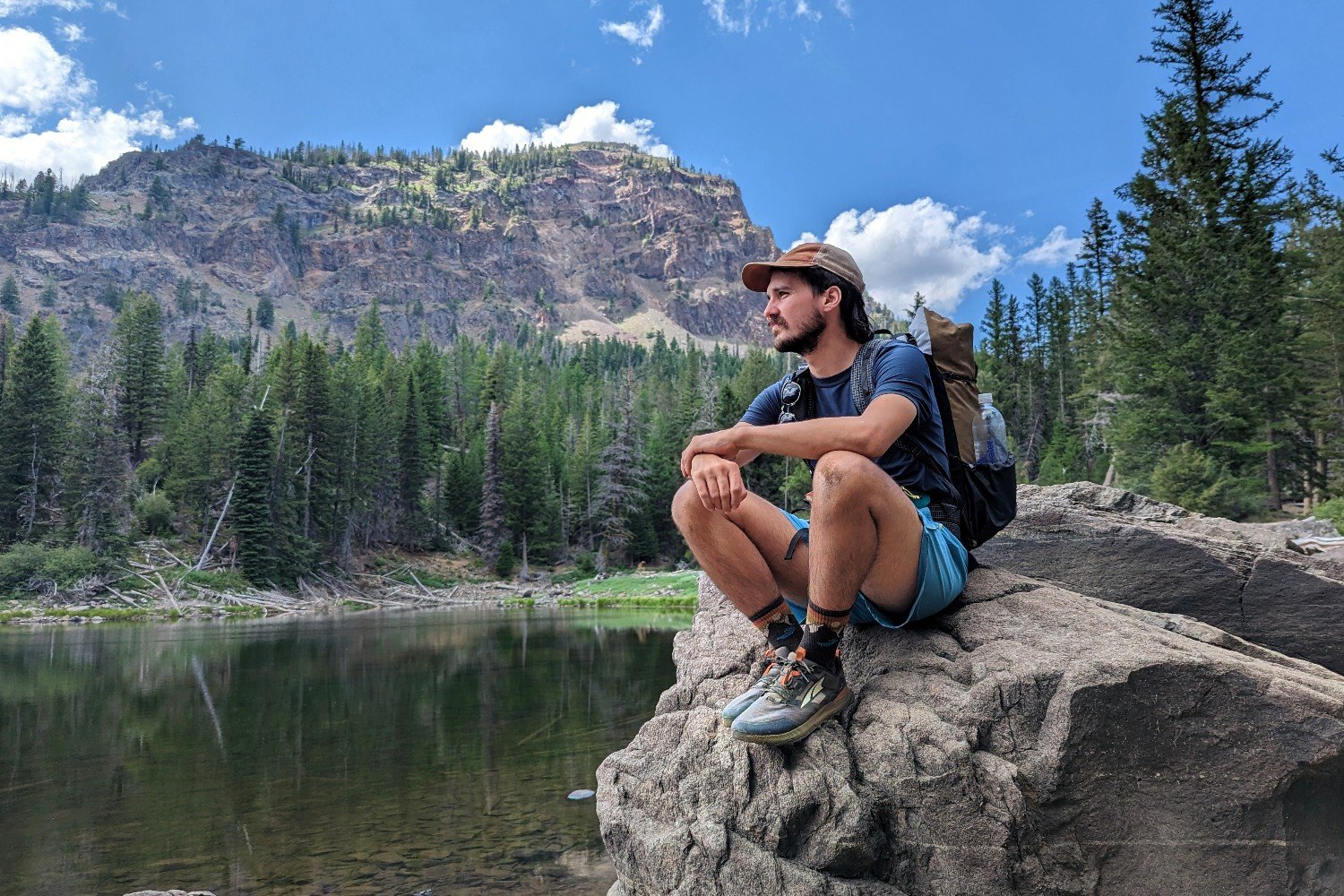
PHOTO CREDIT: CASEY HANDLEY (CLEVERHIKER.COM)
More Strawberry Mountain Wilderness Photos
MORE INFORMATION
We hope this guide helps you plan a fun adventure in the Strawberry Mountain Wilderness. As always, please leave a comment below if you have any recommendations, questions, or suggestions. And if you found this guide helpful, please share on social media, and click the little heart button below to give us a digital high five!
For more popular CleverHiker content, check out the following links:
Some of the links on this page are affiliate links, which means we may receive a modest commission if purchases are made through those links. This adds no cost to our readers and helps us keep our site up and running. Our reputation is our most important asset, which is why we only provide completely honest and unbiased recommendations.

